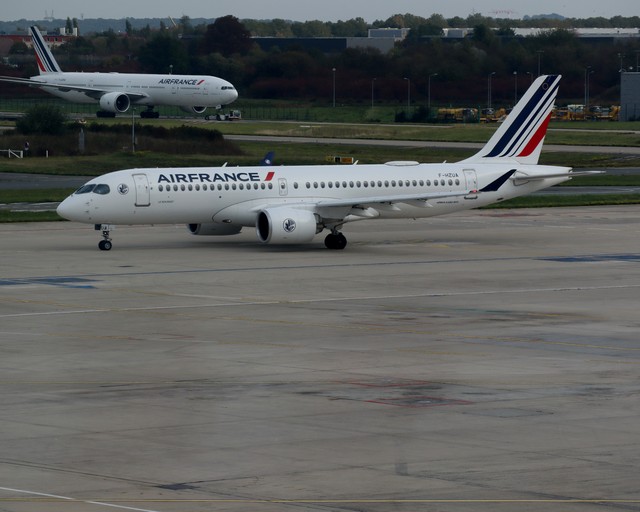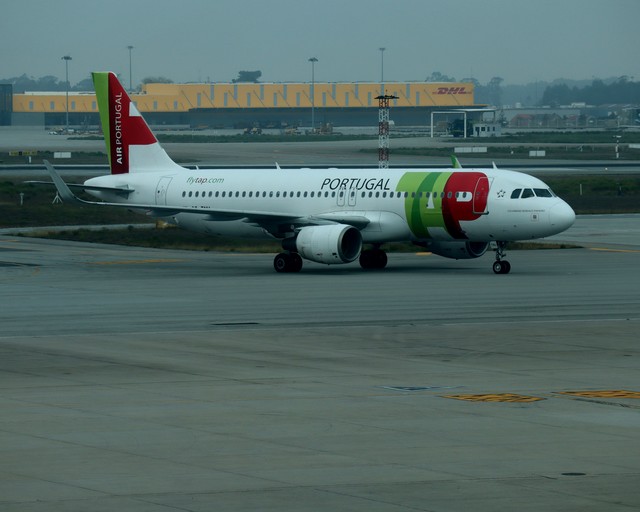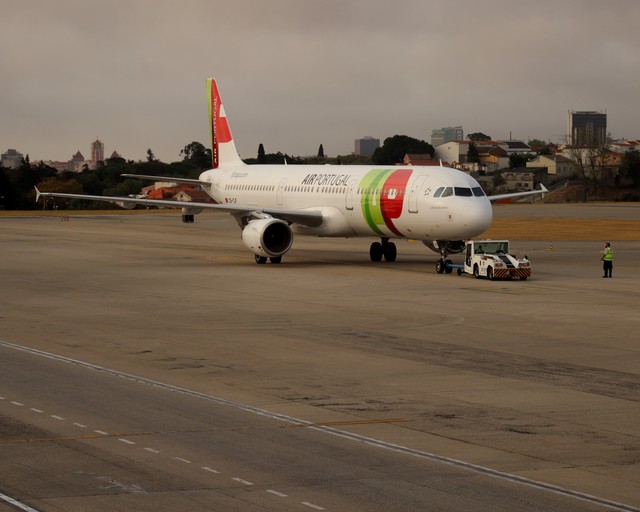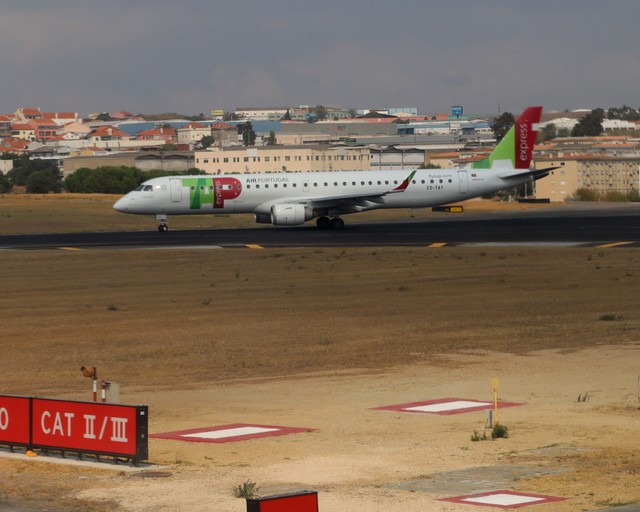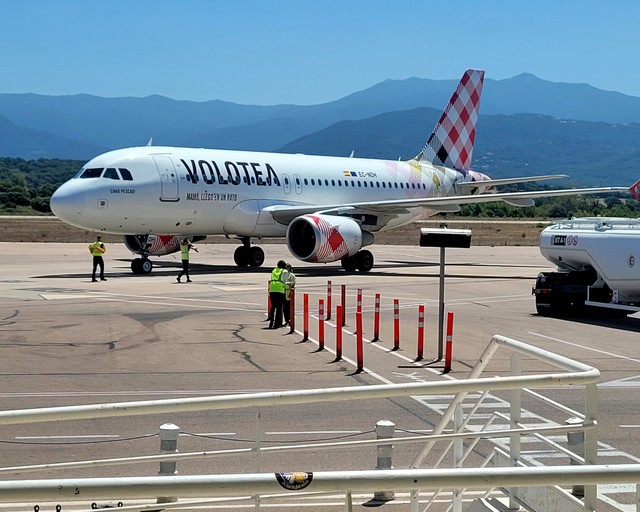Hello and welcome on board this flight report. Today's report is about a local indian flight that i've taken approximately one year ago. This flight as already been reported on the french counterpart of the website. You will find here the translation.
Introduction
I was travelling to India for business a year ago for a couple of months. Luckily my company is allowing to book extended travel if the price of the flight ticket is the same or lower as the initial working period.
I didn't just stay in the megacity of South India, I took the opportunity to visit this incredible country that is India.
My partner and I had planned to visit the "Meenakshi Amman" temple located in Madurai before heading to Munnar and Kerala. Land travel in India is inexpensive but extremely slow. Having only a little time available we will take the air option which remains very affordable thanks to the important low-cost offer.
Only the main Indian low-cost Indigo offers direct flights between my city of temporary residence, Bangalore, and Madurai. For lack of choice it will therefore be Indigo who will win.
Which gives us the following routing:
Flight routing
- 16E7203 - Economy - Bangalore => Madurai - ATR 72-600
- 26E661 - Economy - Thiruvananthapuram => Bangalore - Airbus A321neo
At the time of my flight this line was operated 3 times a day by Indigo with recently acquired ATR72-600s. Small particularity the flight is a triangular Vijayawada-Bangalore-Madurai. On the FR side, this will be only the second report in English for Indigo's ATRs and of course first report on this line between Bangalore and Madurai.
Departure from Bangalore airport T1
The journey start on a sunny Sunday morning at Bangalore Kempegowda airport, and it’s already no easy to get there! Plan at least 1 hour to 1 hour 20 minutes to reach the airport, this can easily increase to 2 hours when traffic is heavier. For taxis, count around 2000 inr (22€). For an Uber you can go down to 800inr (-10€). There seems to be buses service but I haven't tried them. Our airline of the day Indigo operates from T1 like several other so-called low-cost airlines.
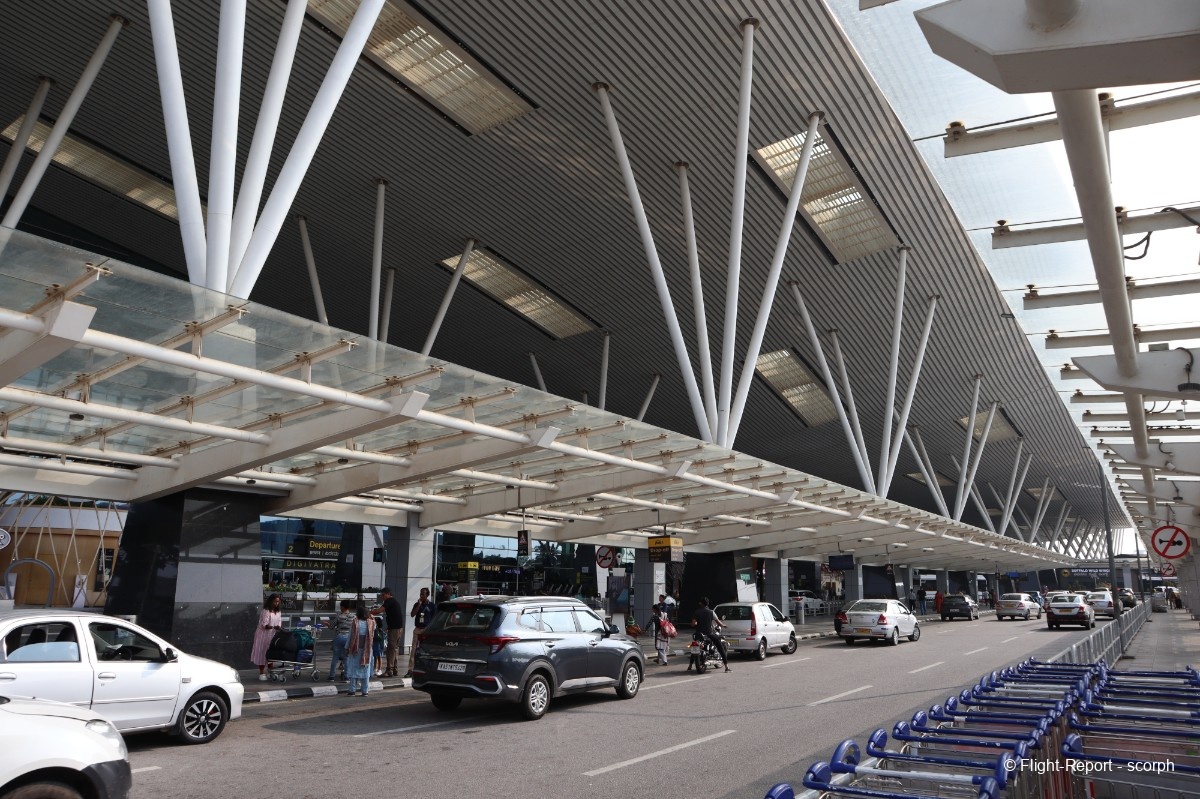
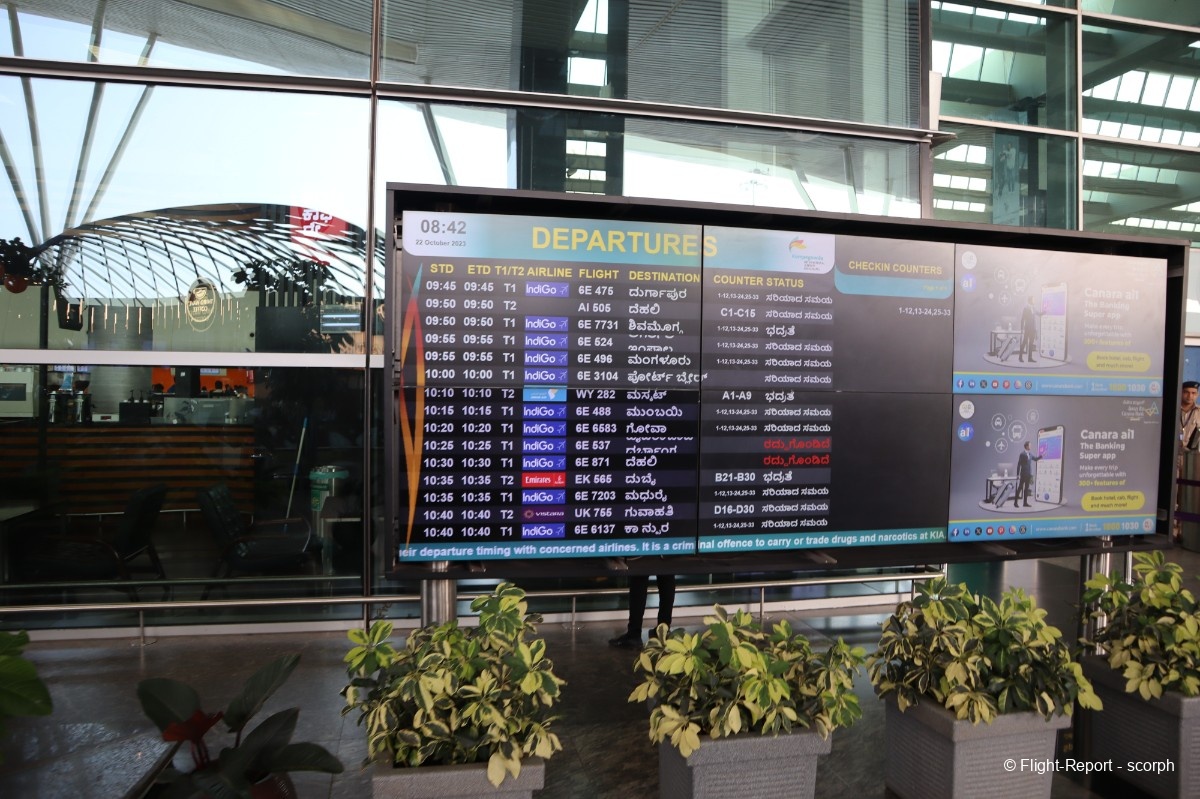
Once in front of the airport you have to prouve your identity, in fact all the entrances to the terminal are guarded by armed police who carry out an identity pre-filter and check that you have a reservation. Note that there are fast lines with facial recognition called digi-yatra but you must register before and foreign passports cannot benefit from them at the moment.
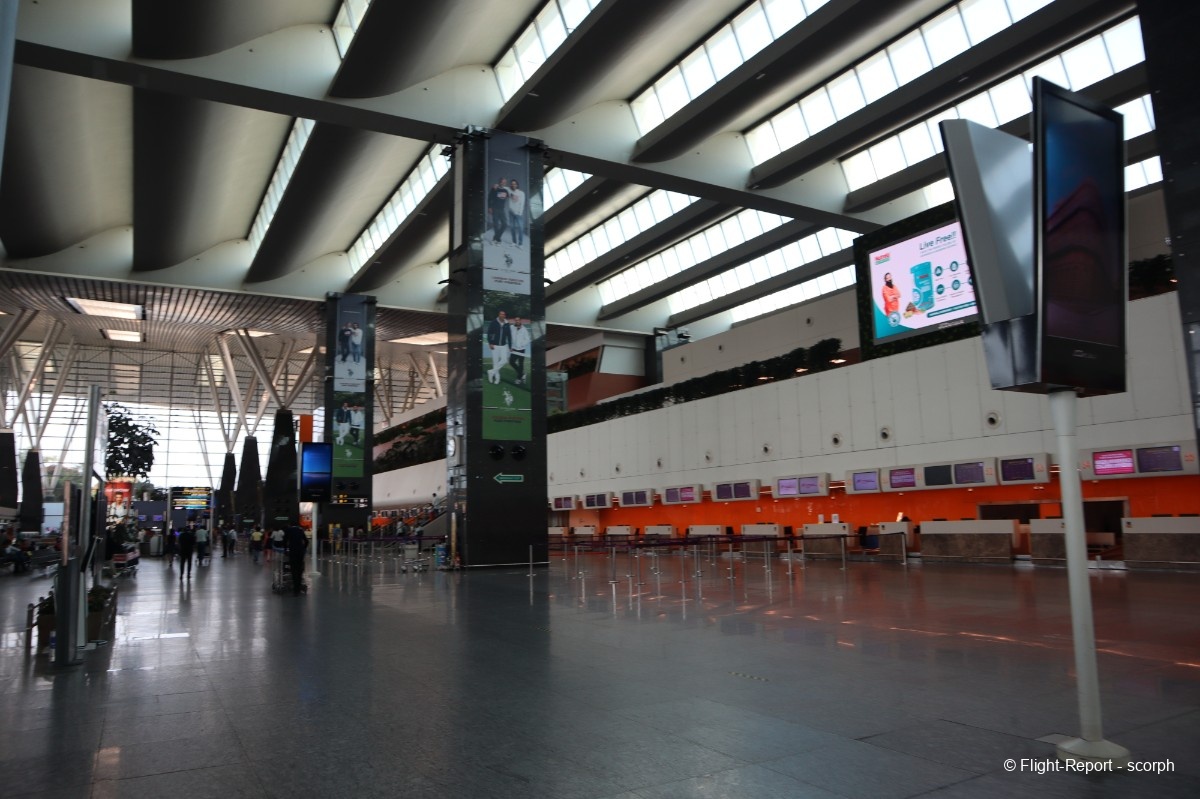
Today’s FIDS in local Kanada language
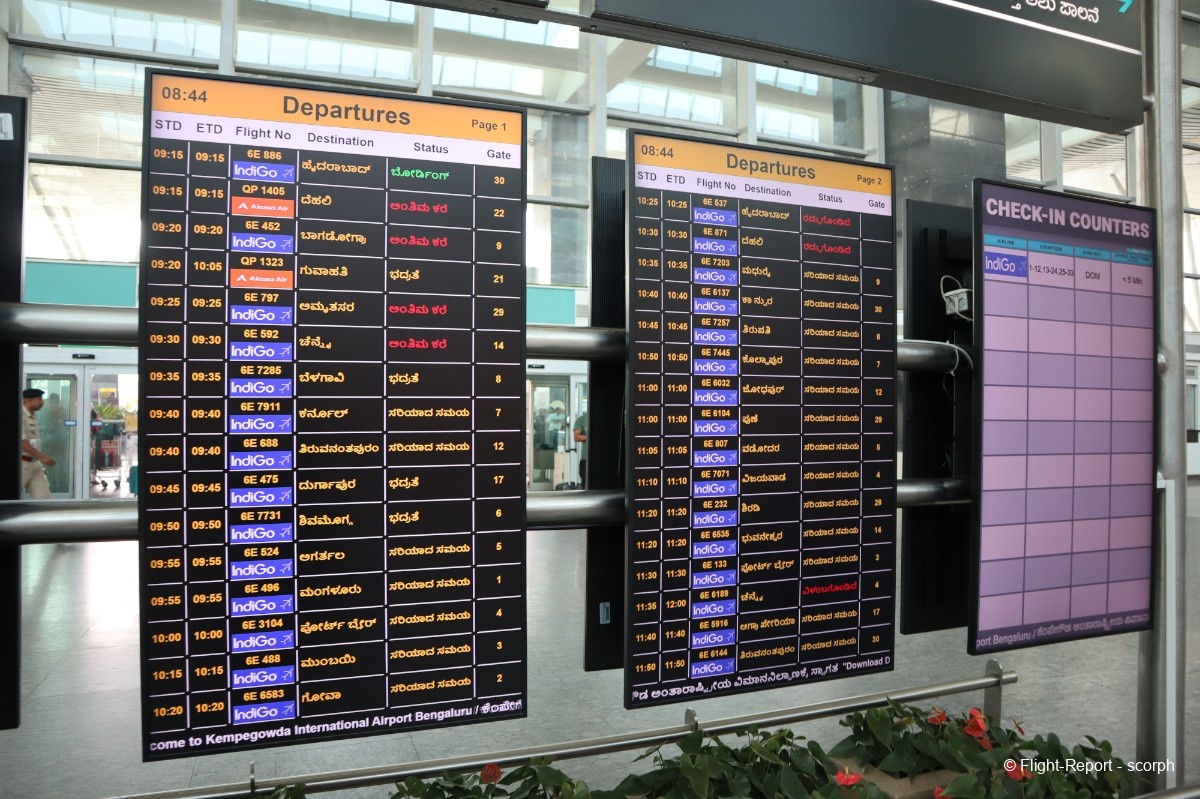
After this first control, we reach the main hall to check in our luggage. Indian airlines (low-cost as well) have the particularity to include even in the lowest fare a 15kg checked baggage in addition to one standard hand luggage (55x40x20). A kind of dream for western passengers.
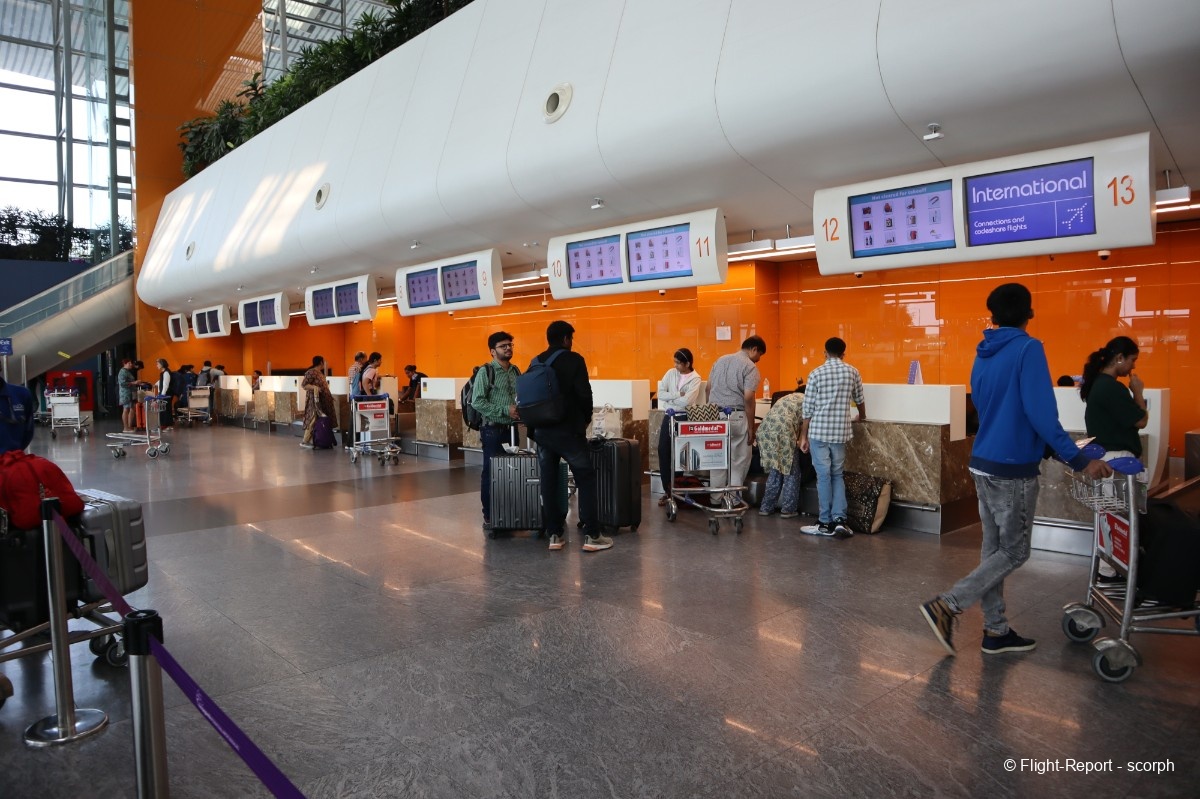
The process through check in was extremely simple and efficient printing by myself our 2 boarding passes and 2 luggage tags. Before heading to the luggage drop line, which will take less than 5 minutes.
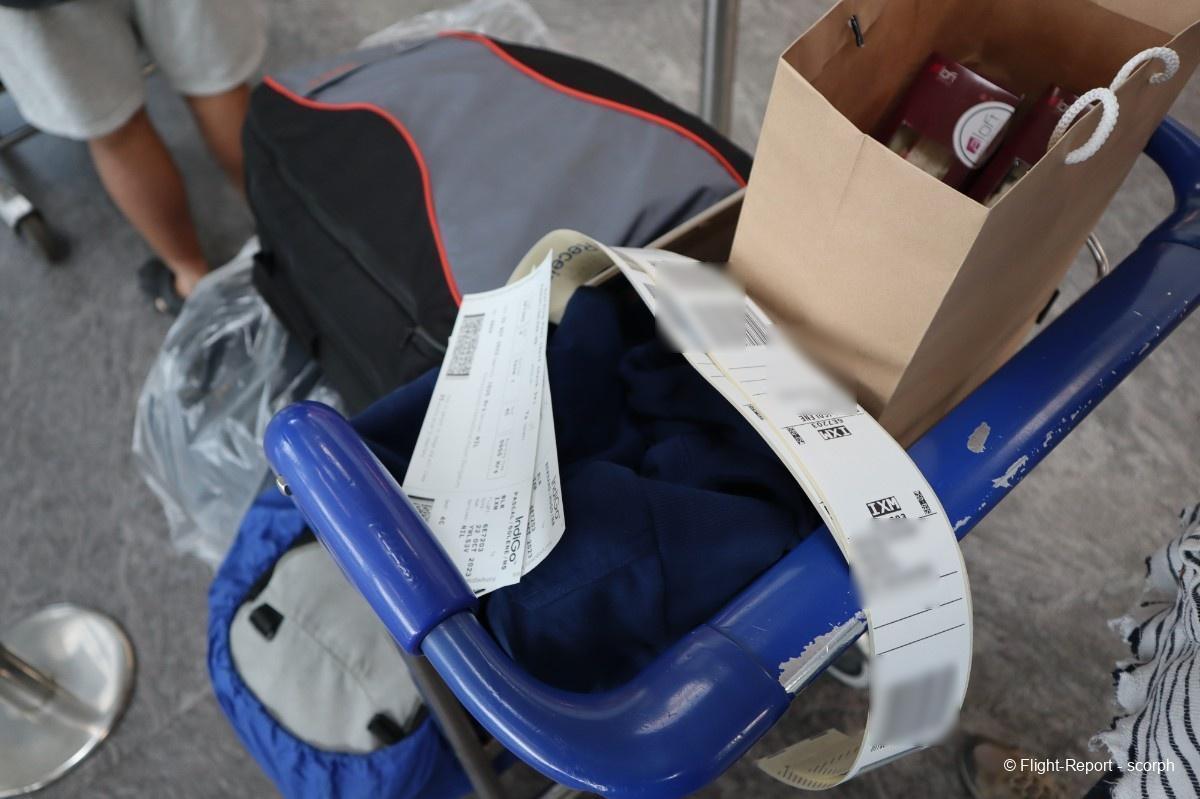
On the way, a sign reminds you that you cannot check in lighters and other lithium batteries, as well as a much less common restriction in Europe… coconuts ^^.
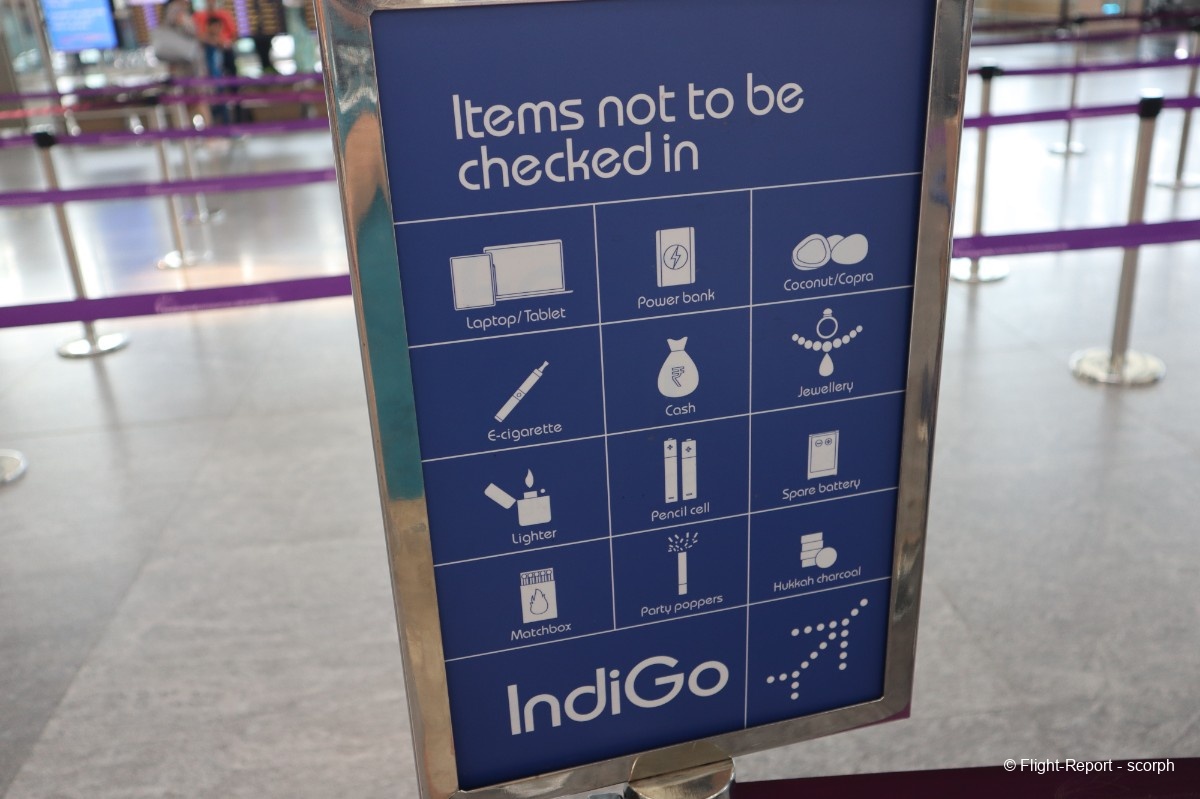
After taking care of our luggage, we need to climb one floor to reach the mezzanine, where we proceed to the security checks.
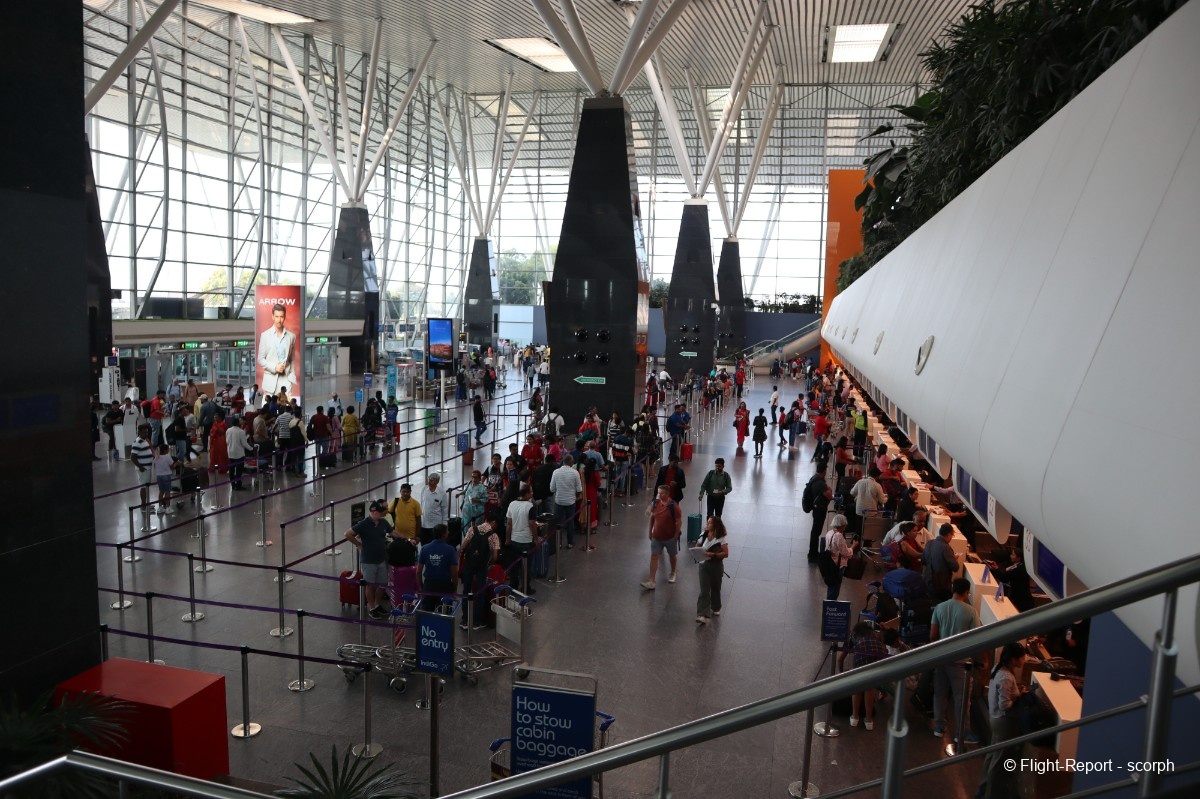
The security check will be very done really quickly, with fairly friendly staff. Afterward, there is no passage through the duty-free shop, but instead, we go through a shopping gallery.
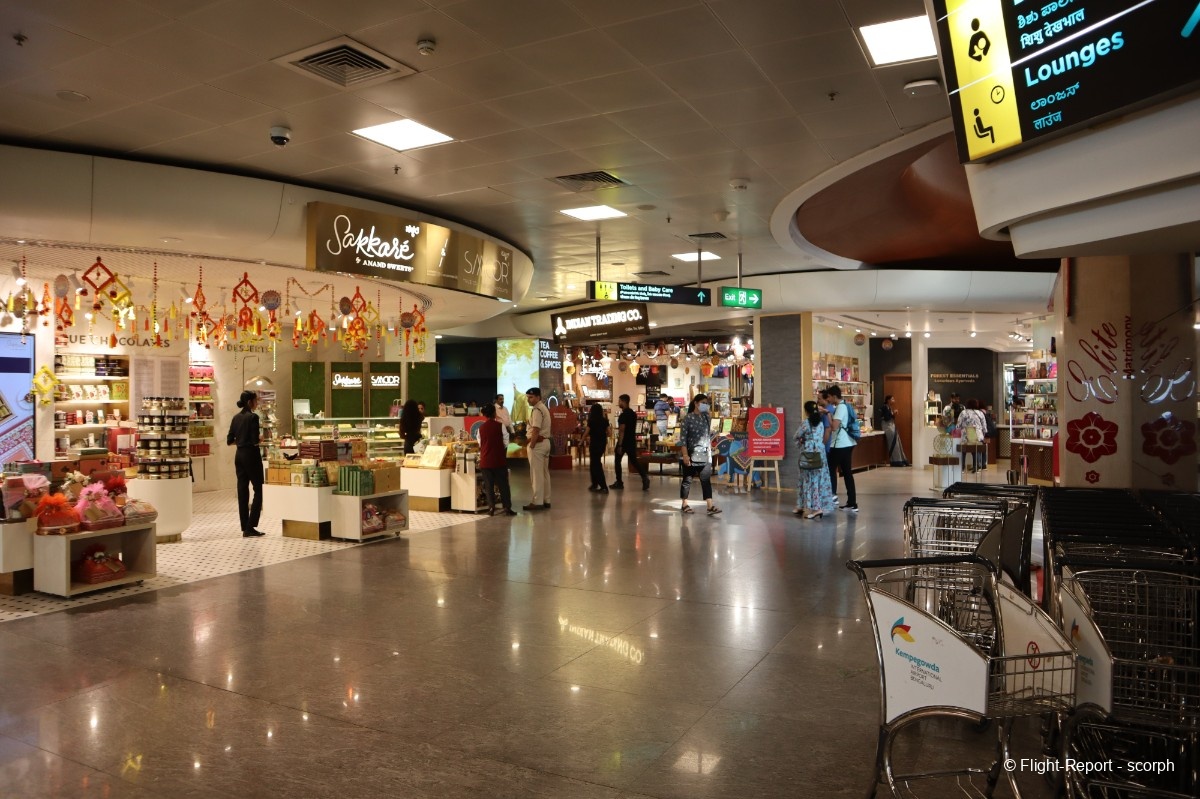
FIDS, where we mainly see Indigo flights to various corners of the country. There's also flights from the "new" low-cost airline Akasa Air.
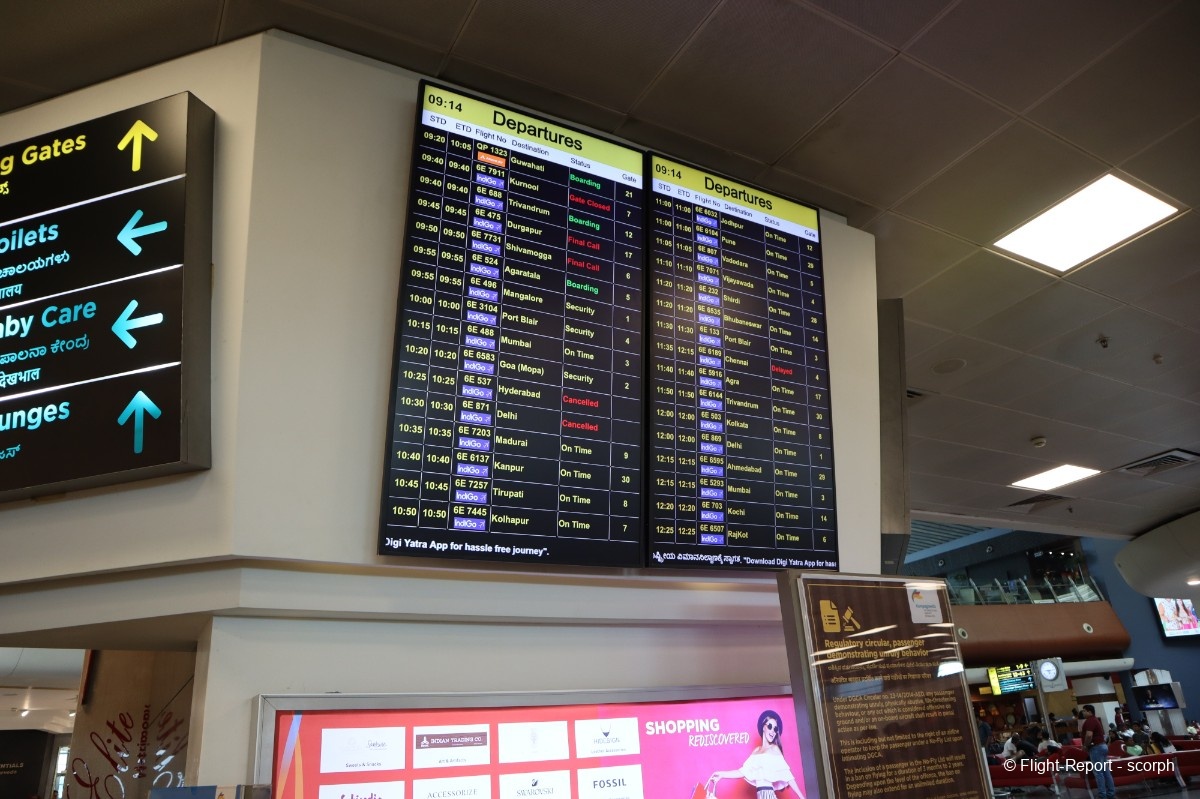
Terminal 1, although the oldest, still looks great with spacious areas and many food outlets close to the gates.
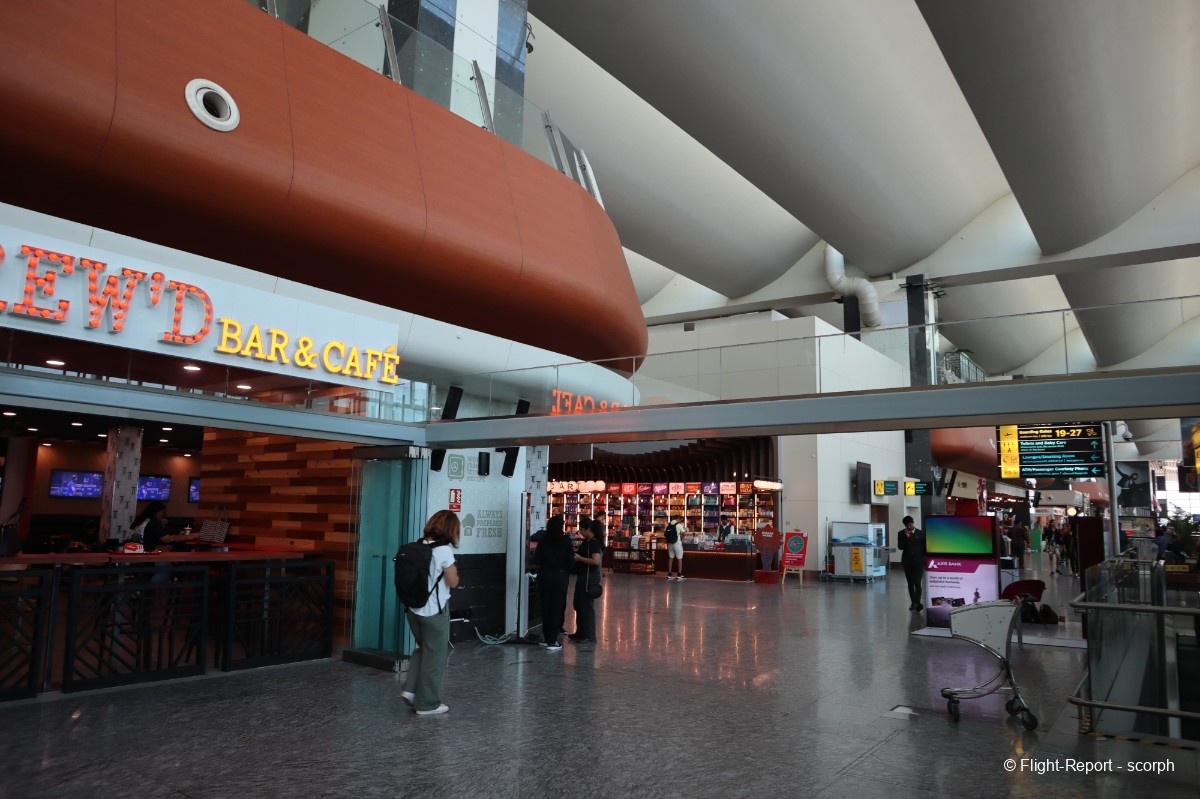
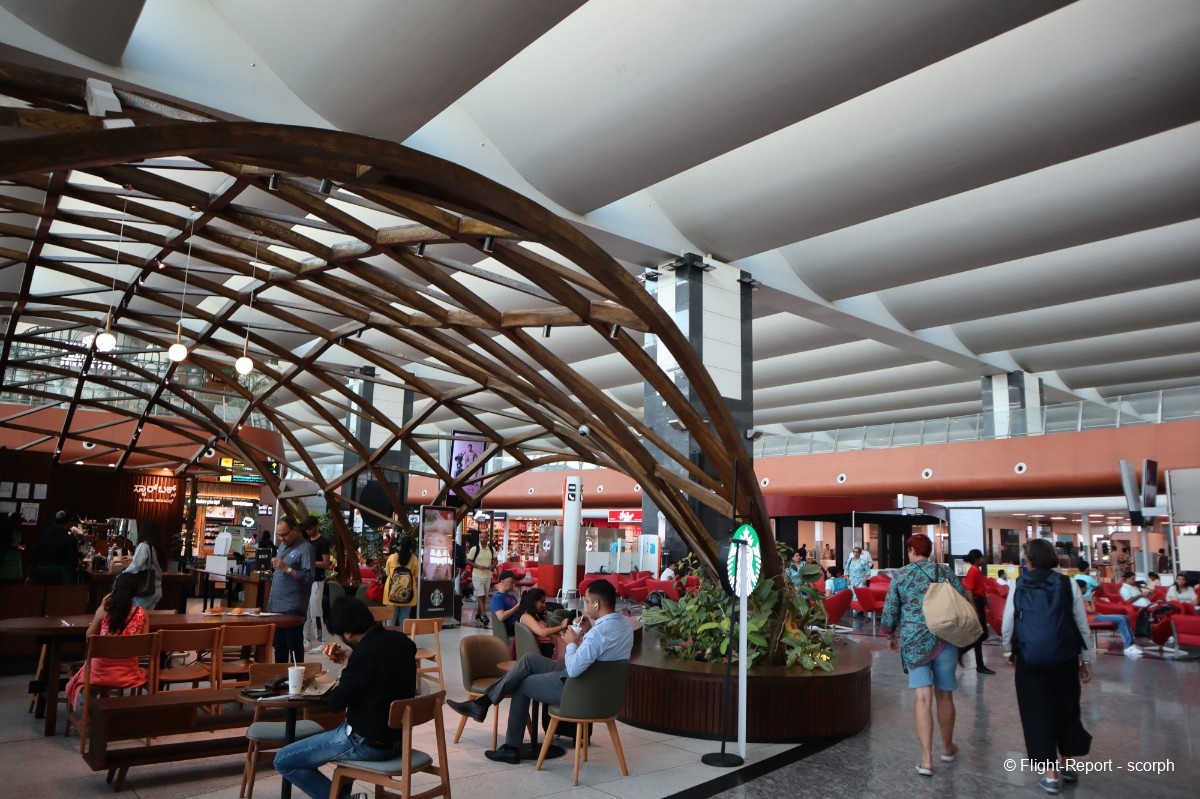
There are a few gates equipped with jet bridges, but most of them are bus boarding gates.
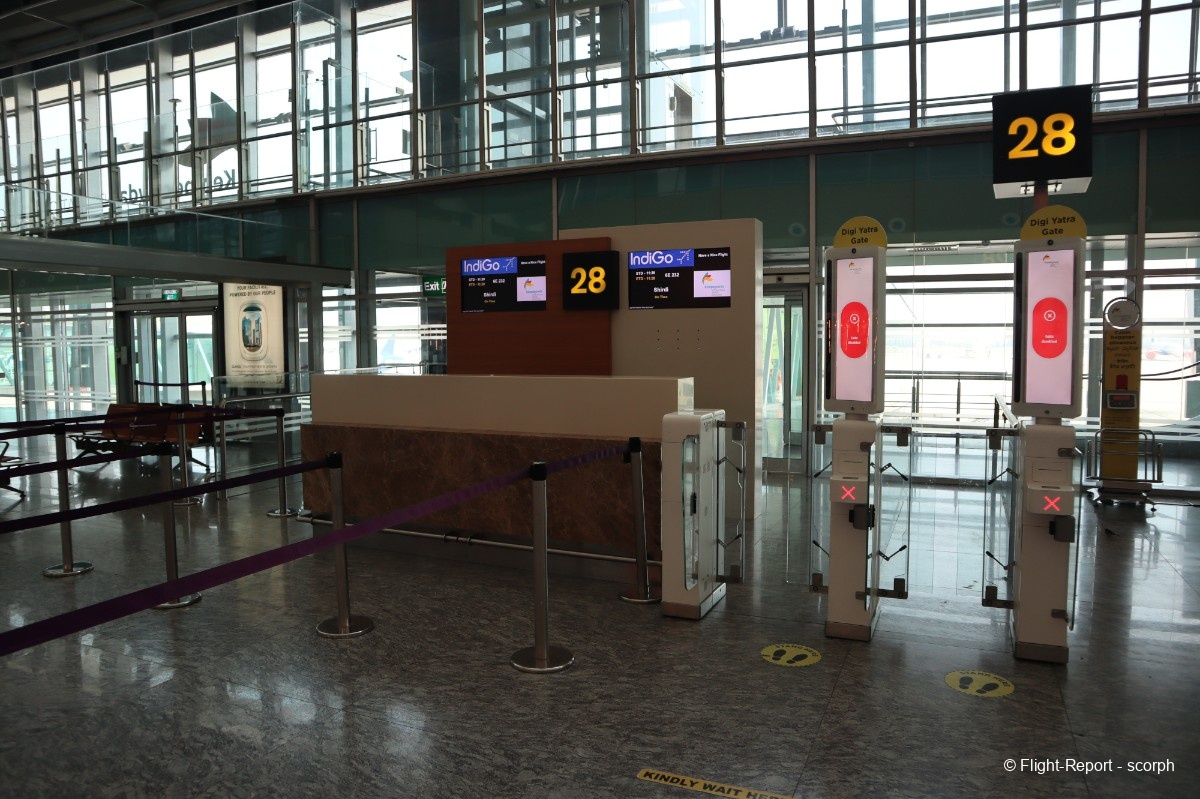
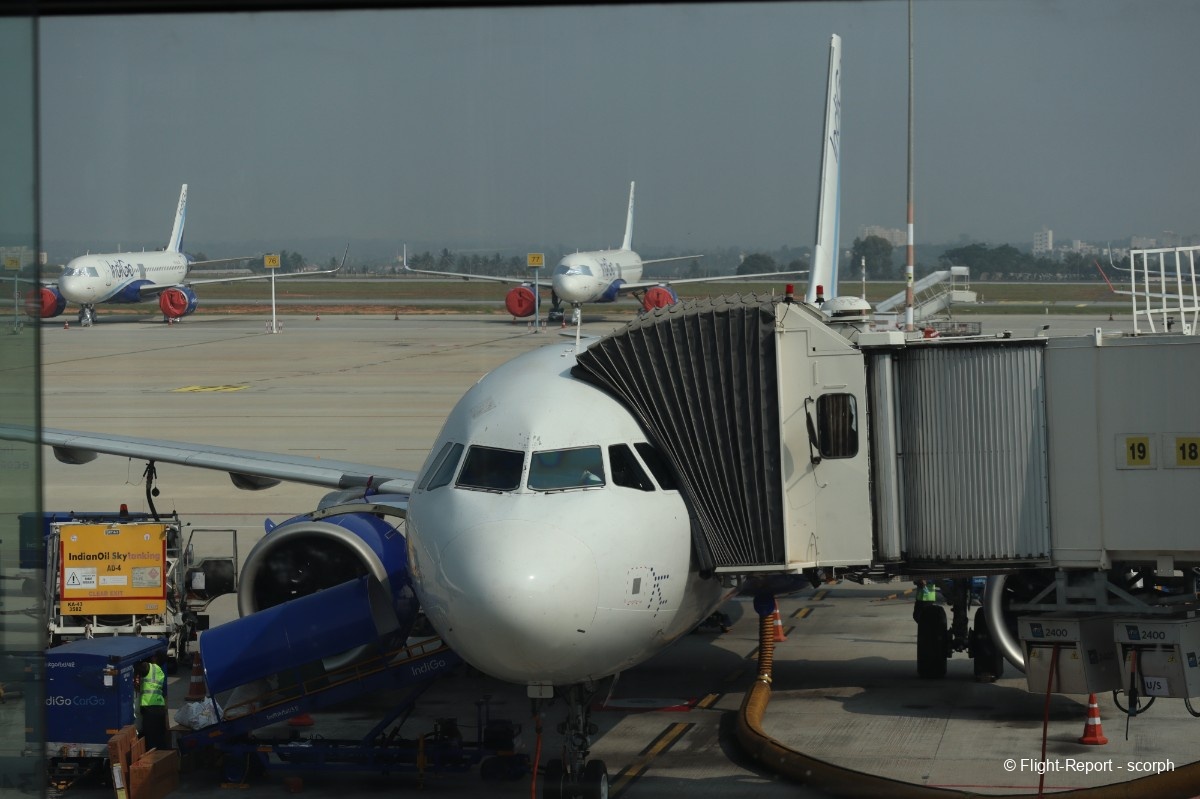
But as you know, my principal interest is outside. The view of aircraft movements from this area is possible, although limited. Of course, you can see many Indigo Airbus A320s, like this A320neo, which is pushing back towards Amritsar, a city located in the far northwest of India, in the state of Punjab.
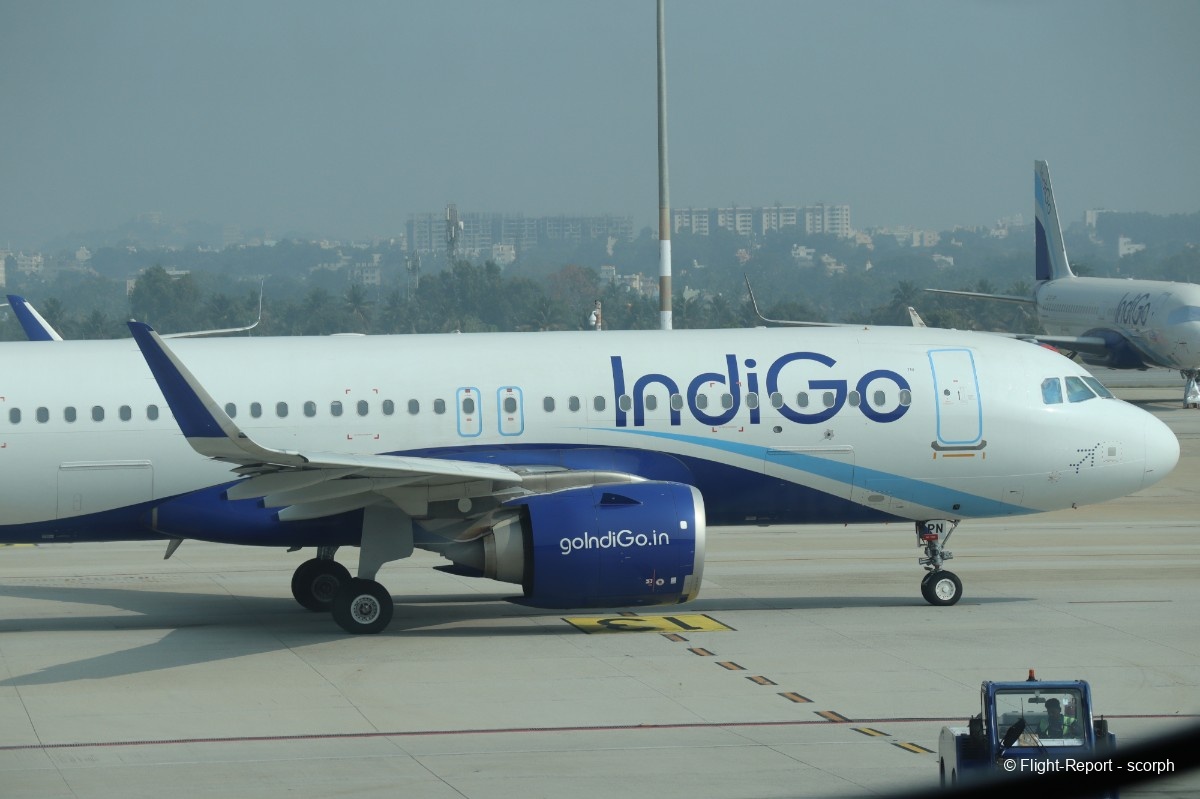
We can also spot aircrafts parked at remote stands, like this Boeing 737 Max-8 from Akasa Air, which will take off in the afternoon for the new Goa Mopa Airport (GOX).
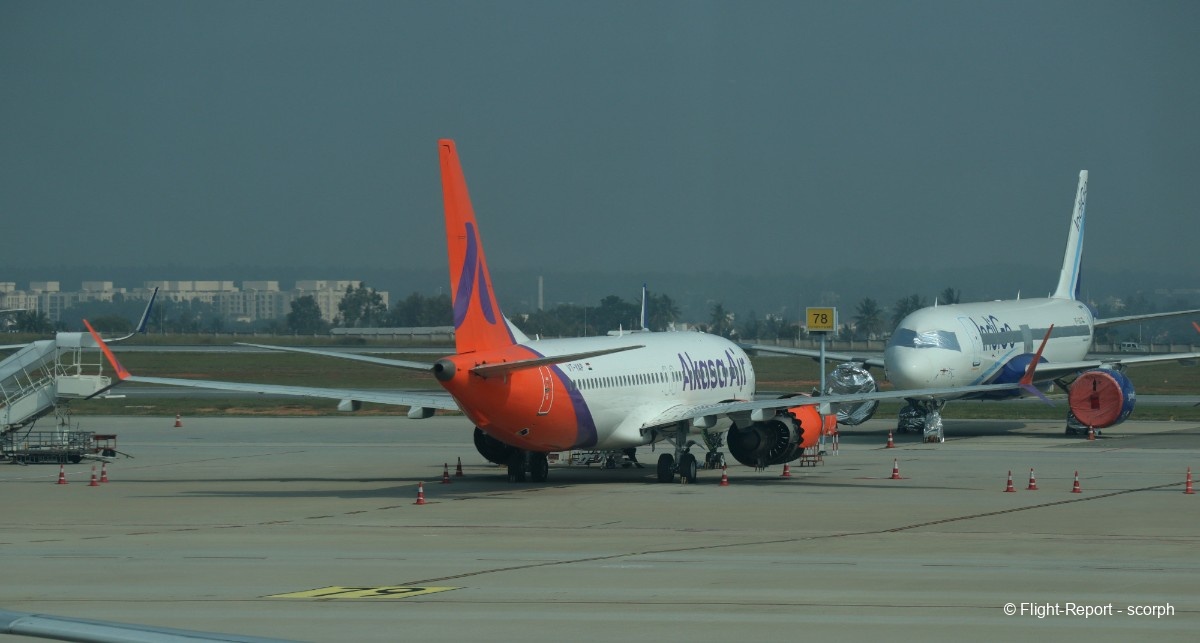
Our gate has just been displayed, and as expected, it’s a pax-bus gate located on the ground floor. We can see it on the edge of the picture there are free newspapers.
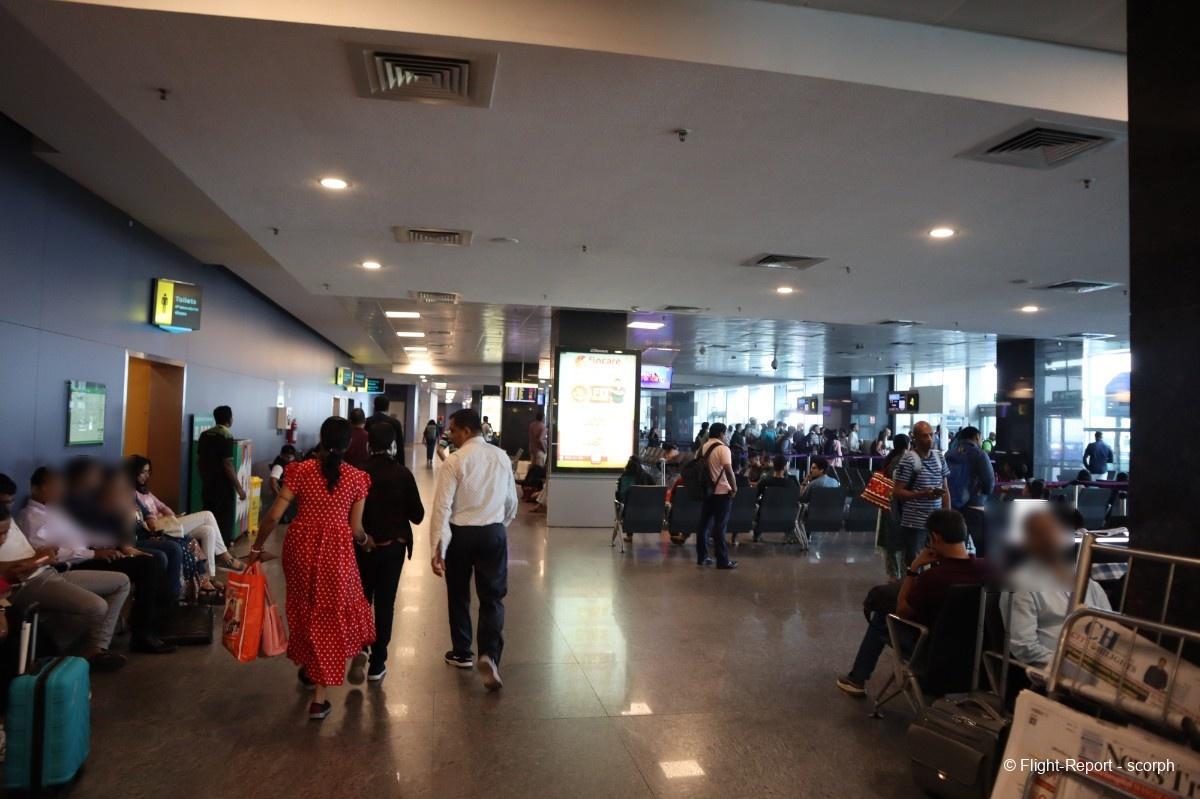
A pleasant surprise on this area, the windows are clearer, offering a better view of the outside. We can see that many A320/321s from Indigo and GoAir are parked there, likely due to the issues encountered with Pratt & Whitney engines powering the new Neo models.
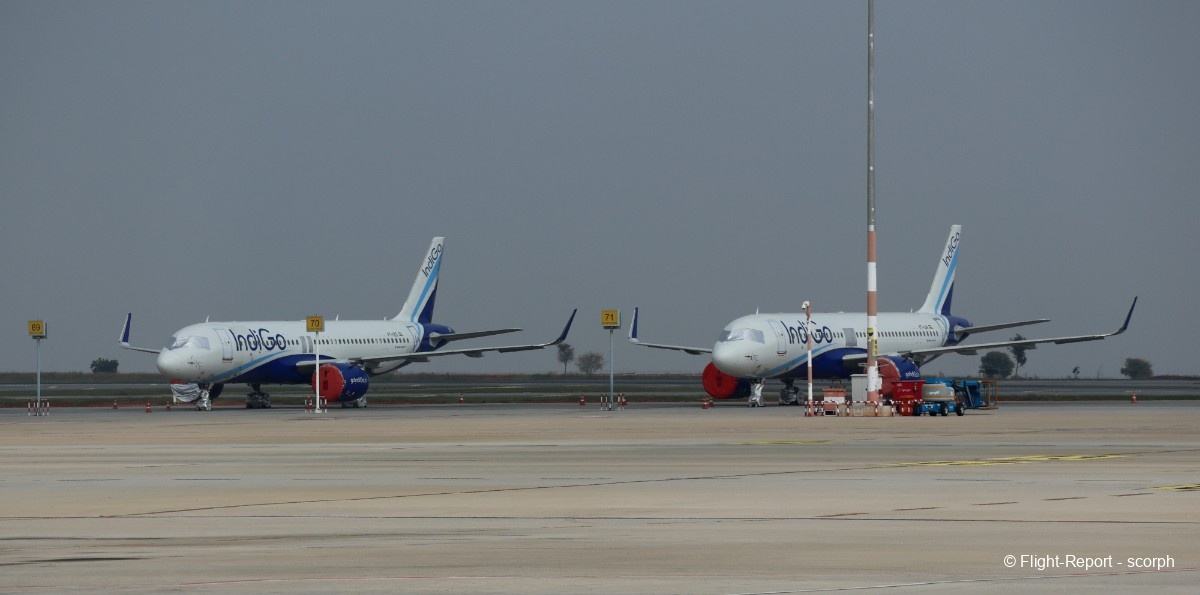
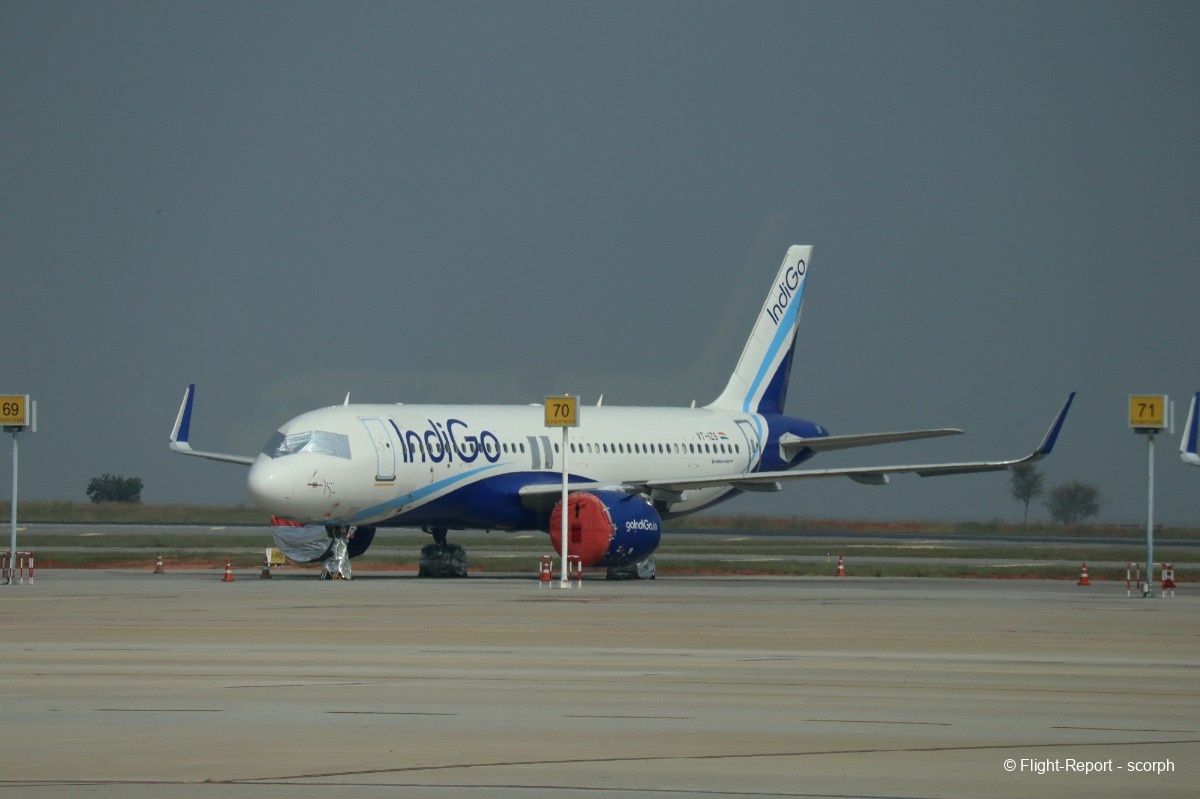
Fortunately, not all are parked! Like this Airbus A320neo, which will take off to Port Blair, the main city of the Andaman and Nicobar Islands. These islands are closer to Myanmar and Indonesia than to mainland India.

No issues for the fleet of ATR 72-600s from the Indian low-cost carrier, despite also being equipped with Pratt & Whitney engines — but these are Canadian ones! This aircraft is departing for Kurnool, a small city located south of Hyderabad
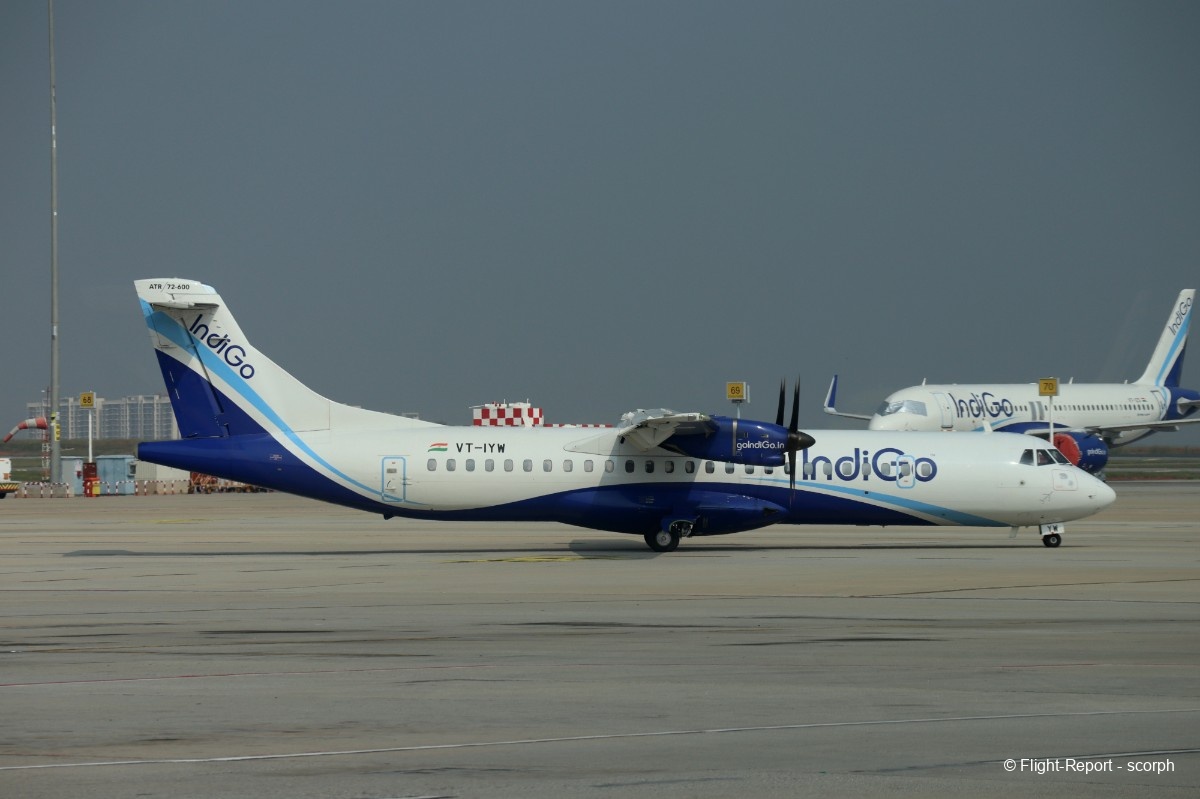
In the distance, we can spot a few cargo aircraft arriving, including this Boeing 777-F from Aerologic, coming in from Bangkok.
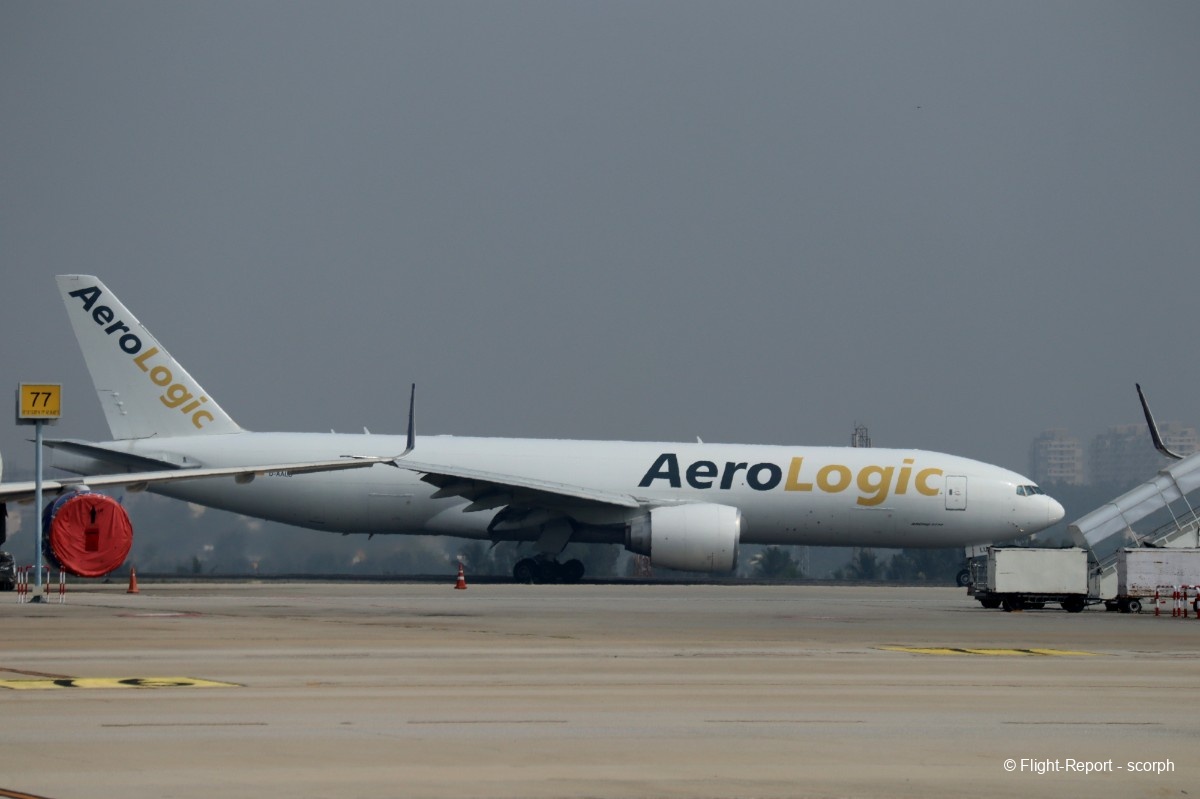
But the bulk of the traffic in this area is dominated by the host of the airport and its single-aisle Airbus fleet, with this Airbus A321neo heading towards Goa Dabolim.
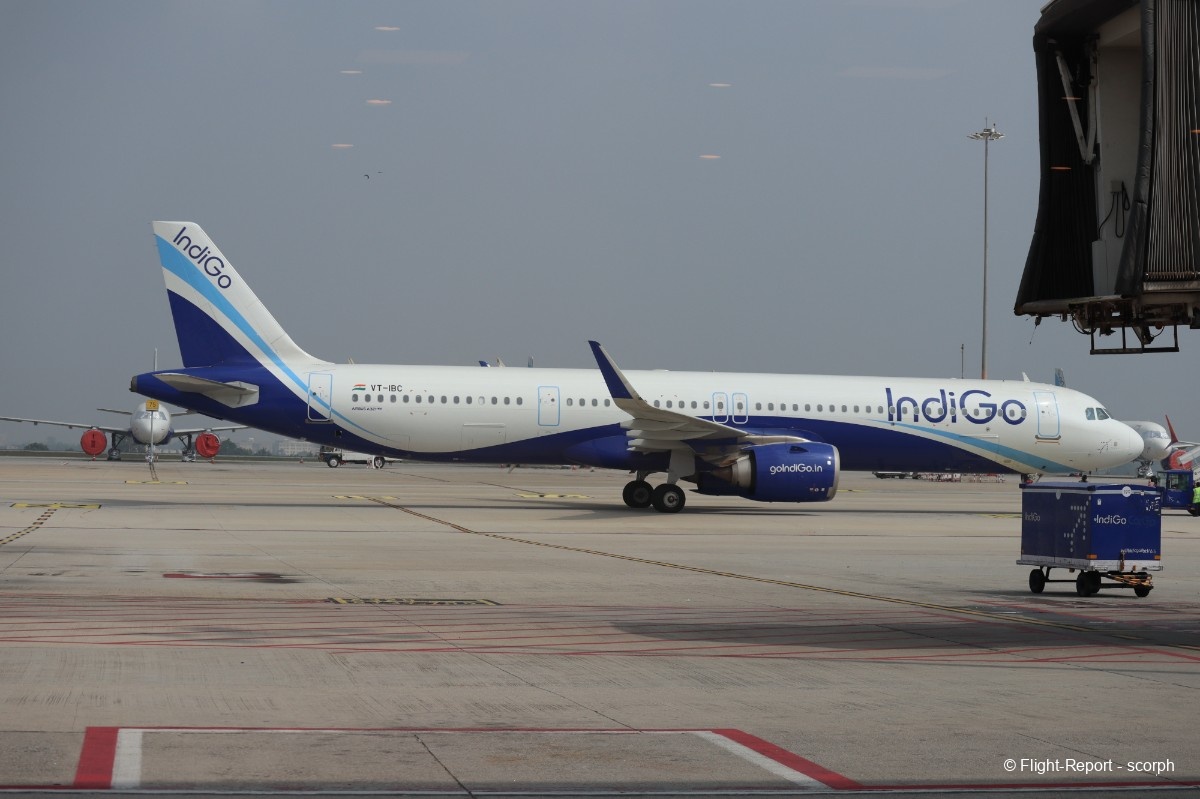
Or this Airbus A320neo arriving from Nagpur, a city in central India, located in the state of Maharashtra.
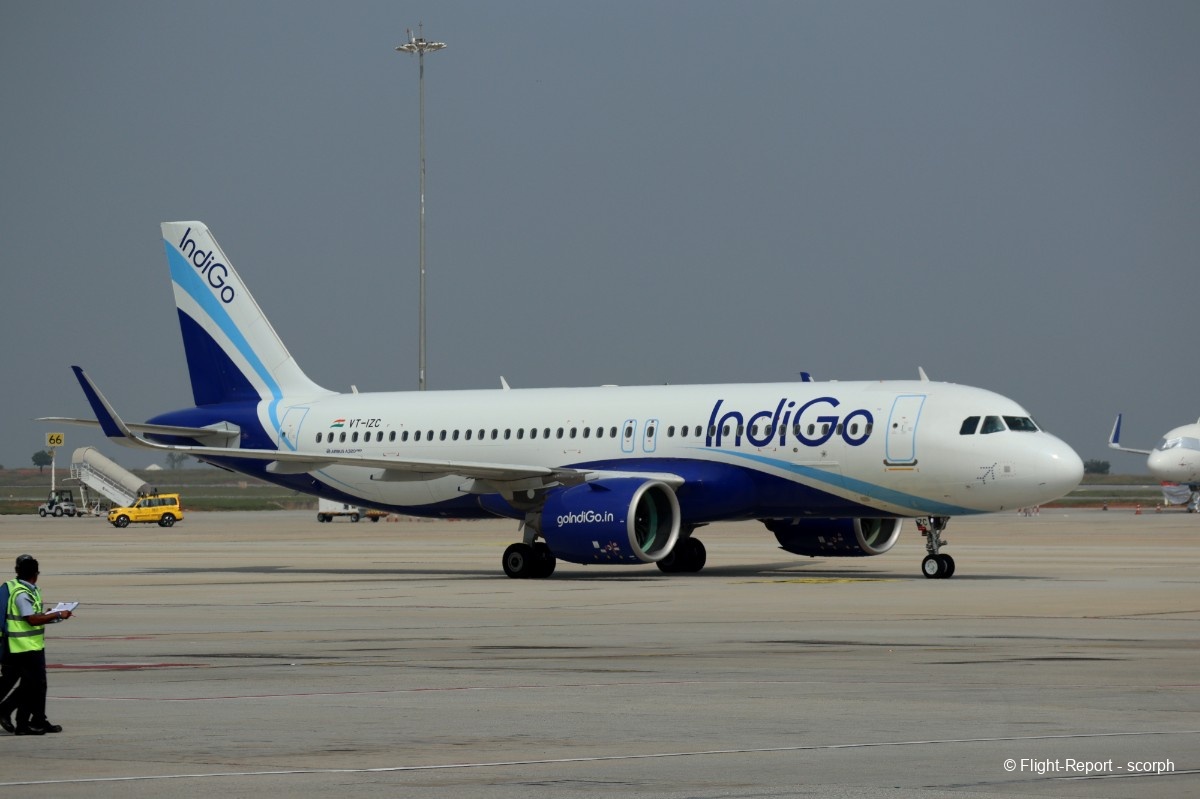
Finally, our ATR 72-600 of the day show is nose, arriving from Vijayawada, a city located to the east of Hyderabad. The flight is a triangular route, with Bangalore being just a stopover, and we’ll have passengers onboard who are traveling from Vijayawada to Madurai.
For the aircraft’s pedigree, it’s VT-IRD, an ATR 72-600 delivered new to Indigo less than three years ago.
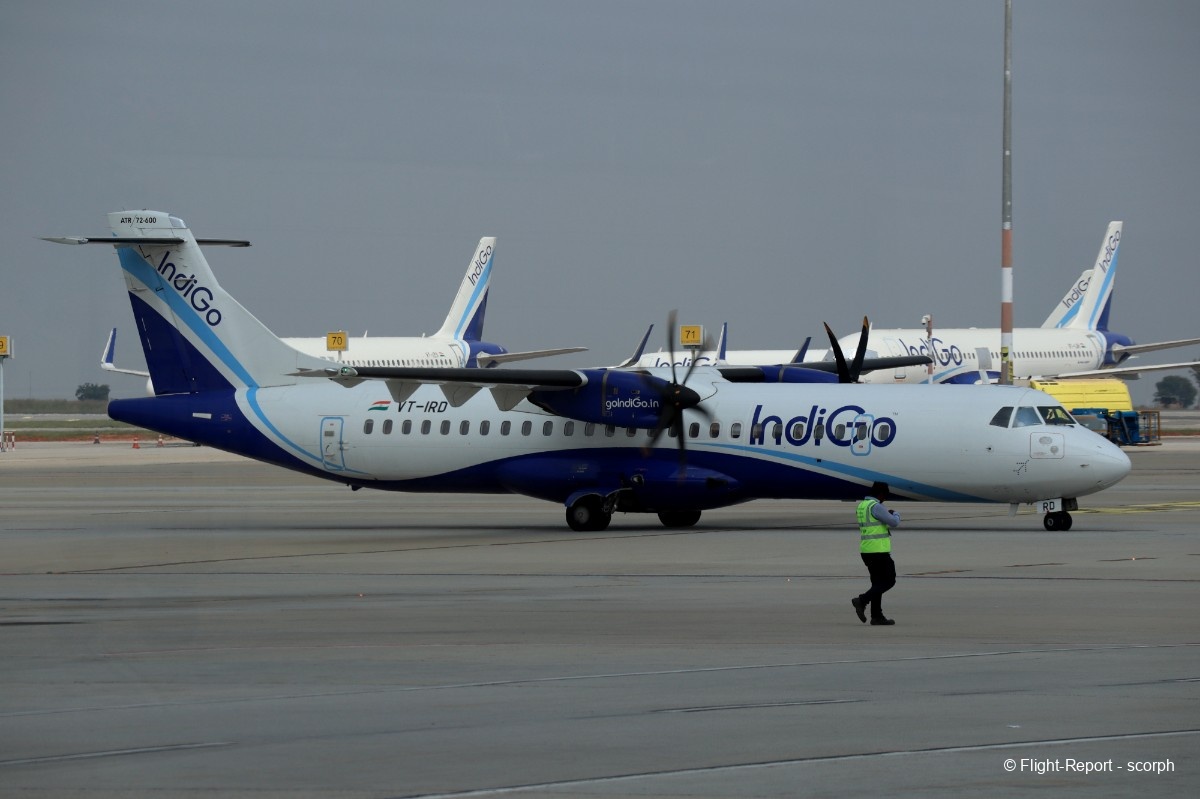
It's time to board, and it will be quite quick as there are only about forty of us boarding.
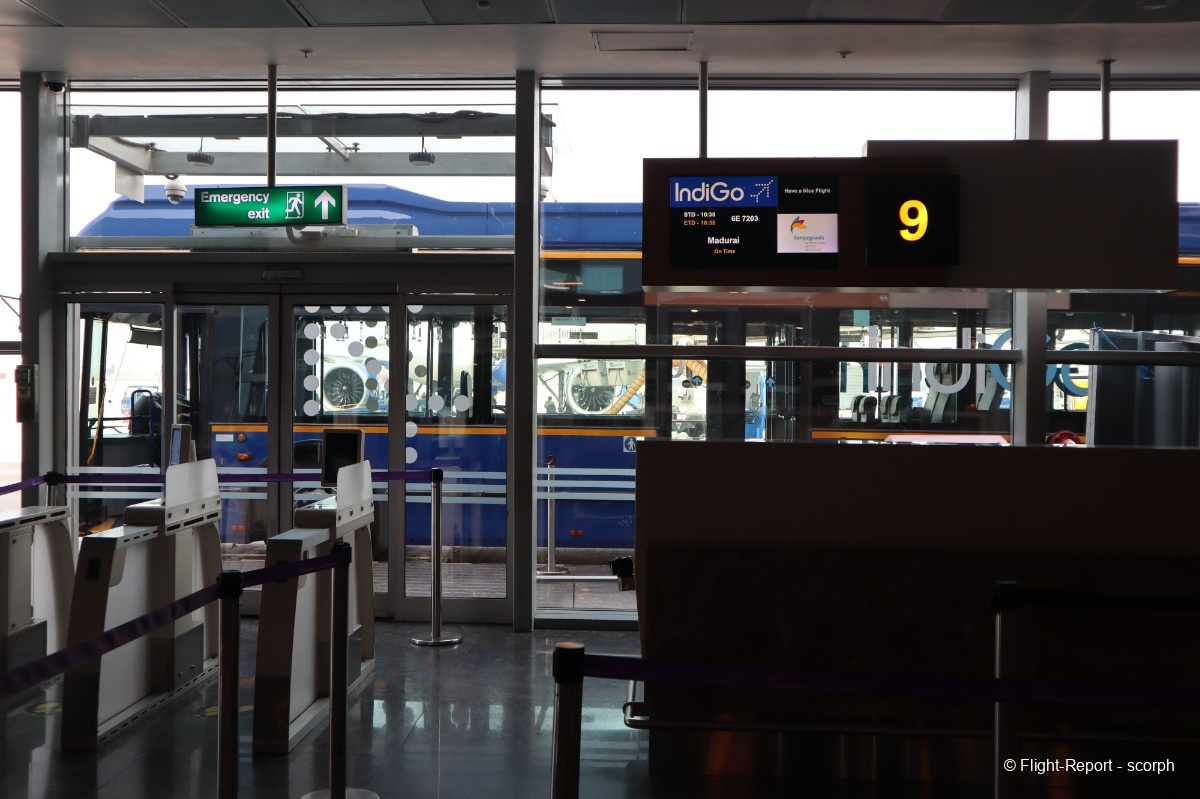
In fact, one bus will be enough. Like most ground equipment, our bus is branded Indigo and is an electric vehicle. Indians are not excepting the Asian rule that all the vehicles equipped with air conditioning must be transformed on a rolling freezer.

We will enjoy a small taxiway tour, which will allow me only to see this A321neo from Indigo arriving from the capital, Delhi.


Before our bus parks in front of our ATR while the passengers whose final destination was Bangalore finally disembarked.

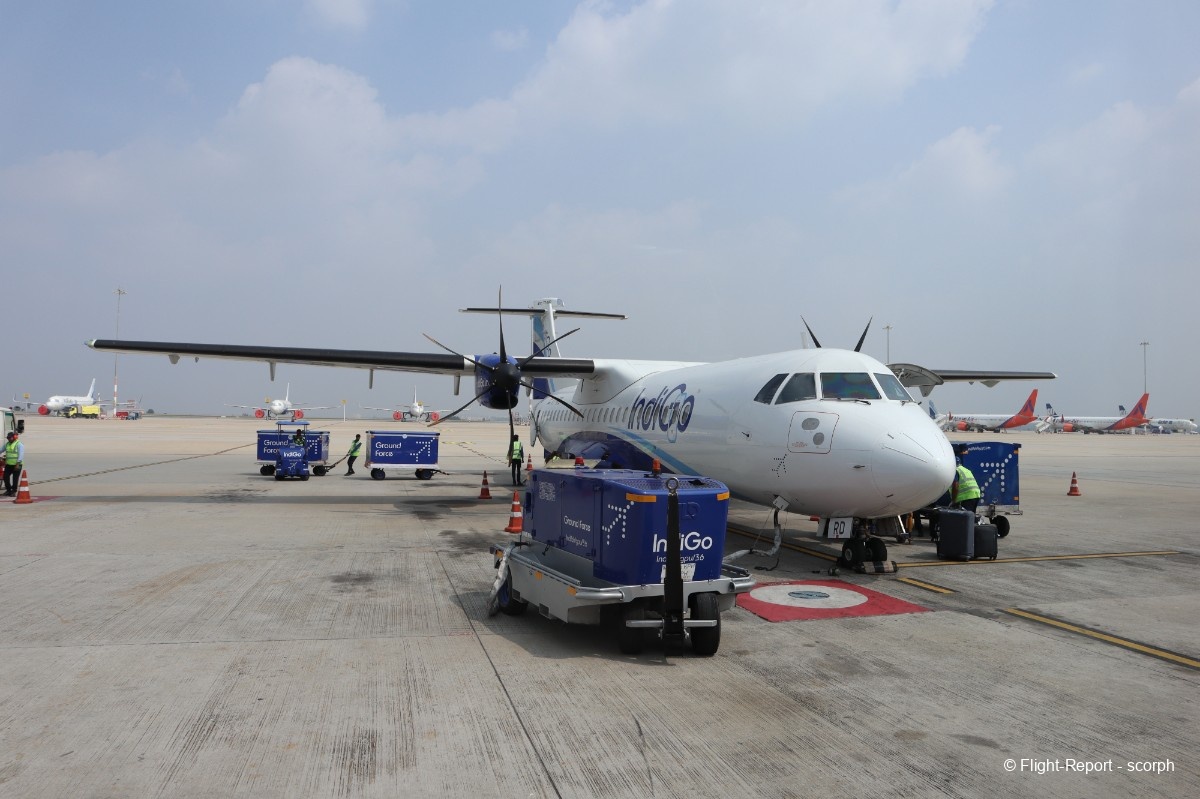
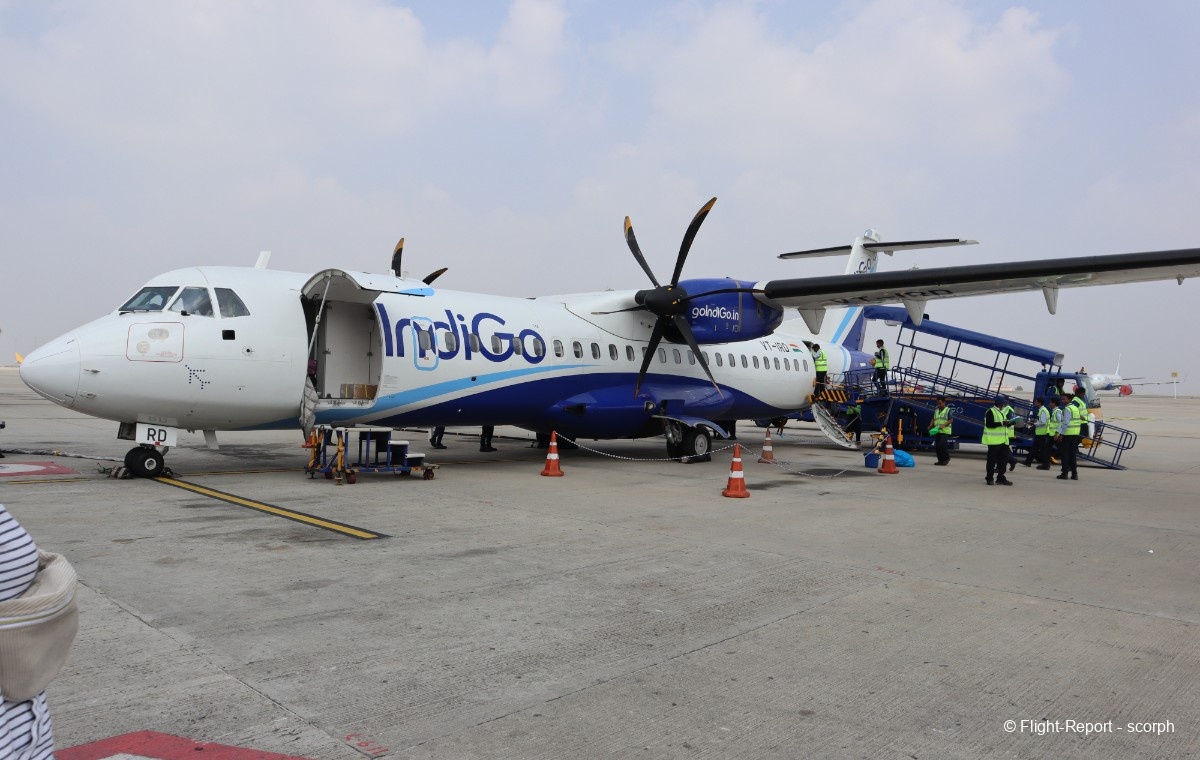
Bus doors are opened and boarding was allowed only for rows 1 to 10. 6E offers the option to choose your seats, and a certain number of them are free when purchasing the tickets (I love low-cost in India! <3).
Notice this strange air-stair allowing access to our ATR without any steps. Another striking detail for a European is the number of ground staff handling a 'small' ATR. I counted no less than 10 peoples, not including the crew, working around our bird of the day. By the way, the mechanic will be a female mechanic!
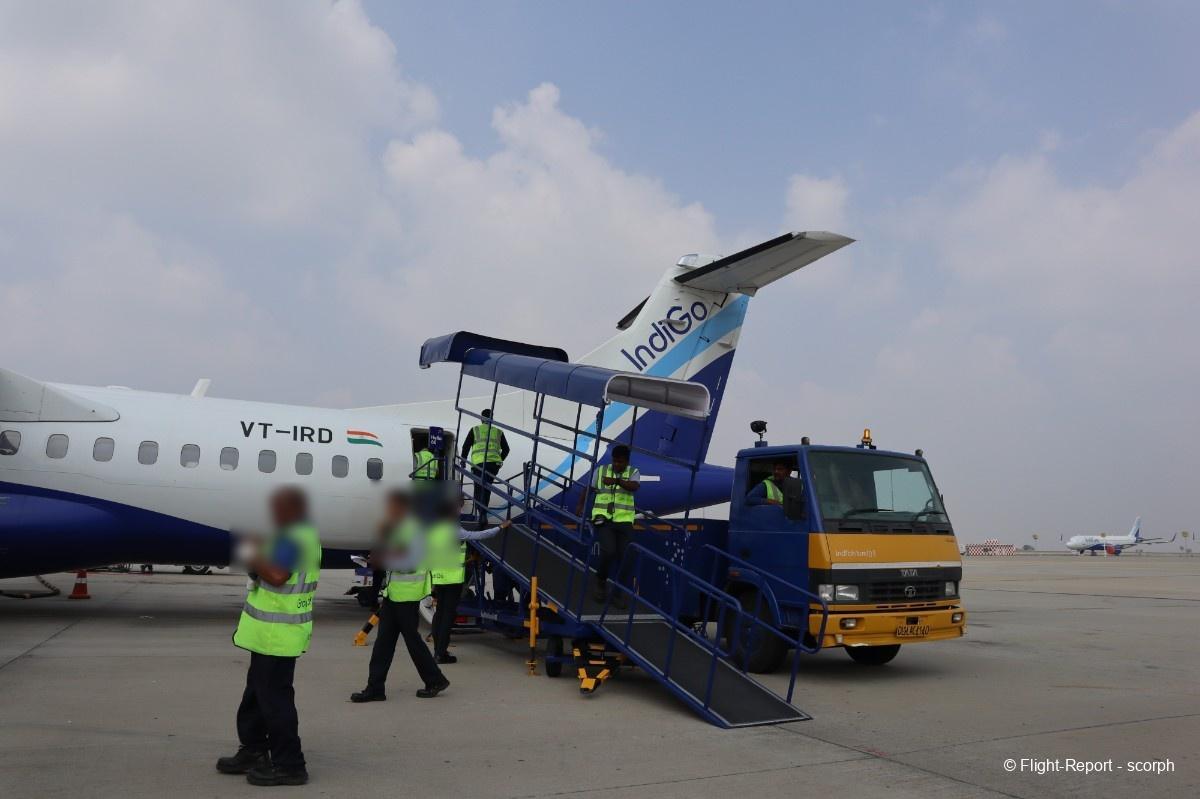

Fuselage shoot.
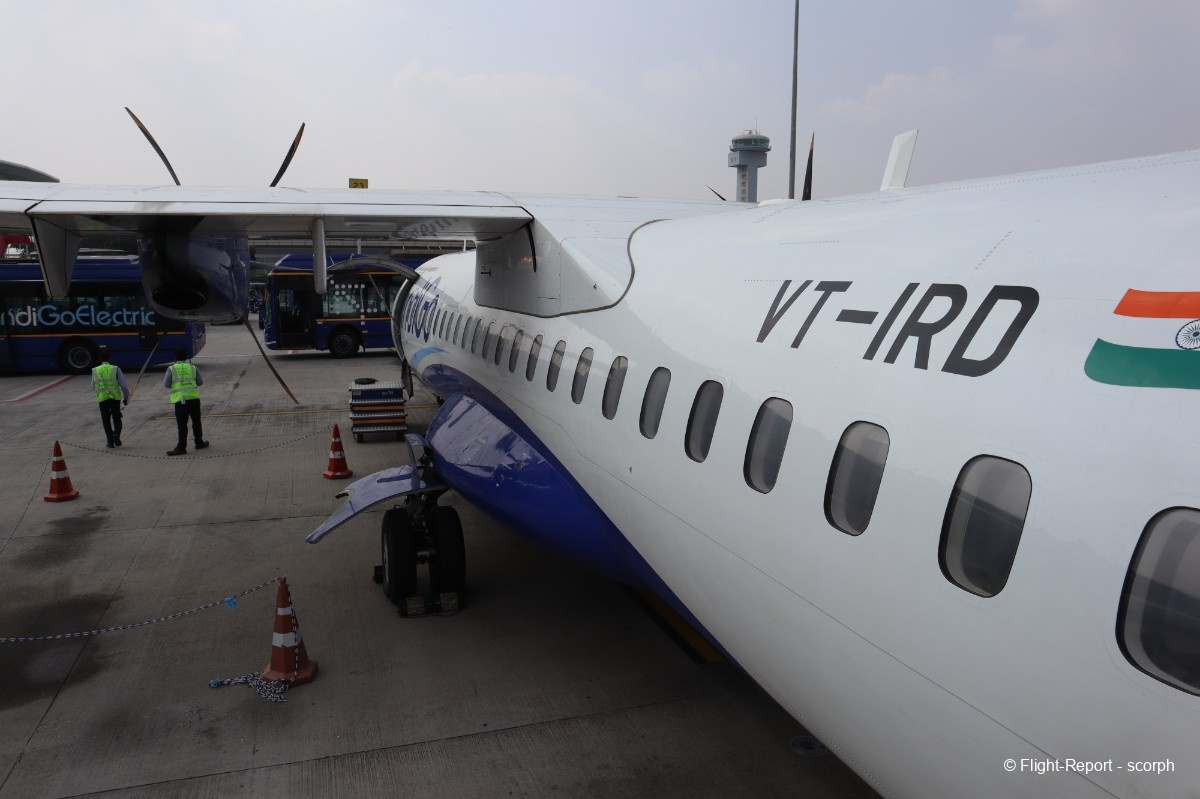
On board Indigo ATR 72-600
The welcome on board will be smiling and friendly from the cabin crew. Our 2 females cabin crew will be particularly cheerful and kind throughout the flight. However, they didn’t really have the typical features of Indian women, rather more Burmese faces, probably women from Eastern India… As for the cabin, it stays blue! About twenty passengers were already on board continuing to Madurai.
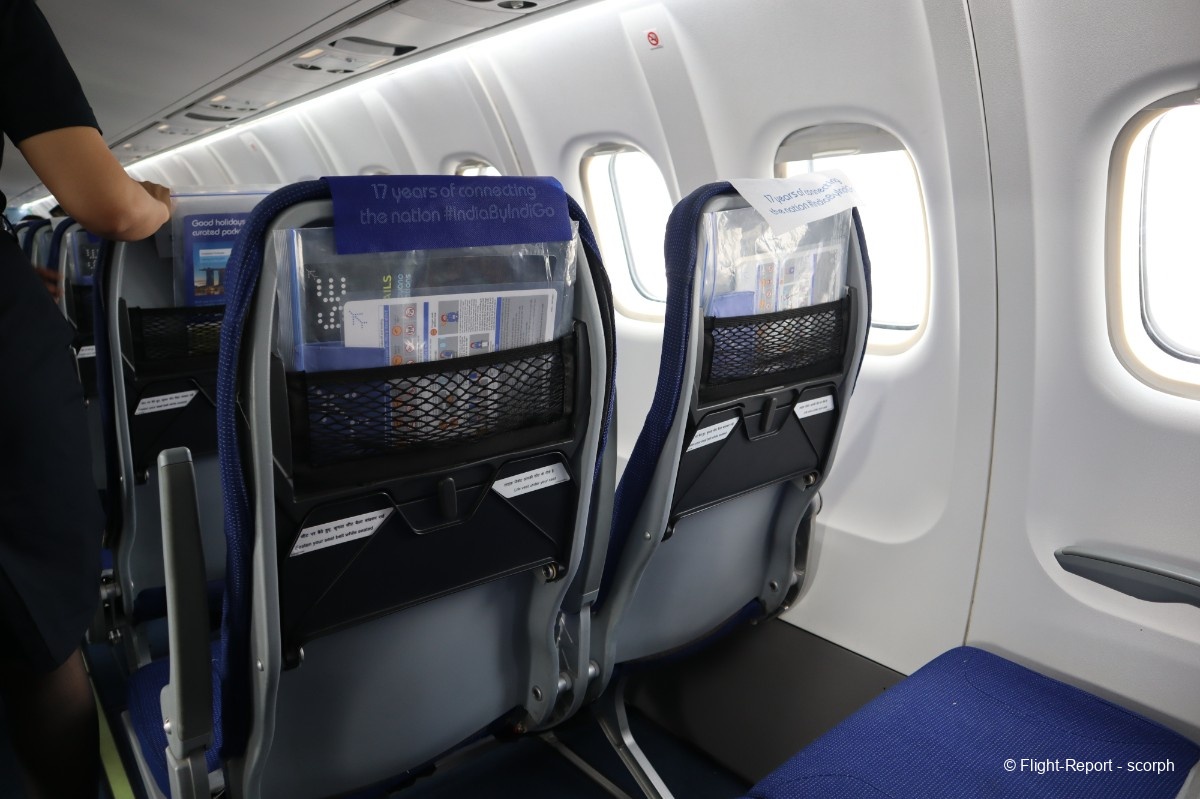
These are not the usual seats offered by the French-Italian manufacturer, but probably a low-cost variant. It is impossible to find the manufacturer on the web; all we know is that the cabin was designed by the Italian firm Giugiaro. Another feature is that the overhead bins are high-capacity versions, and a standard-sized trolley bag can fit in them.
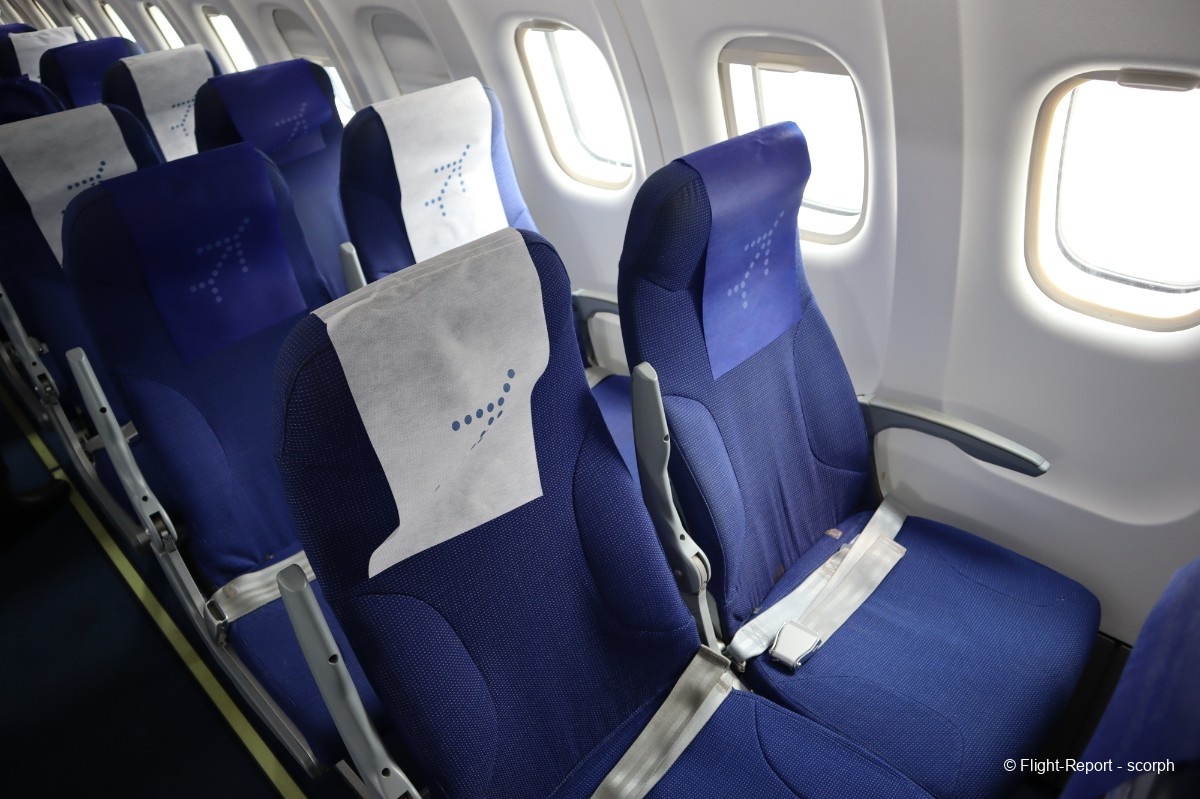
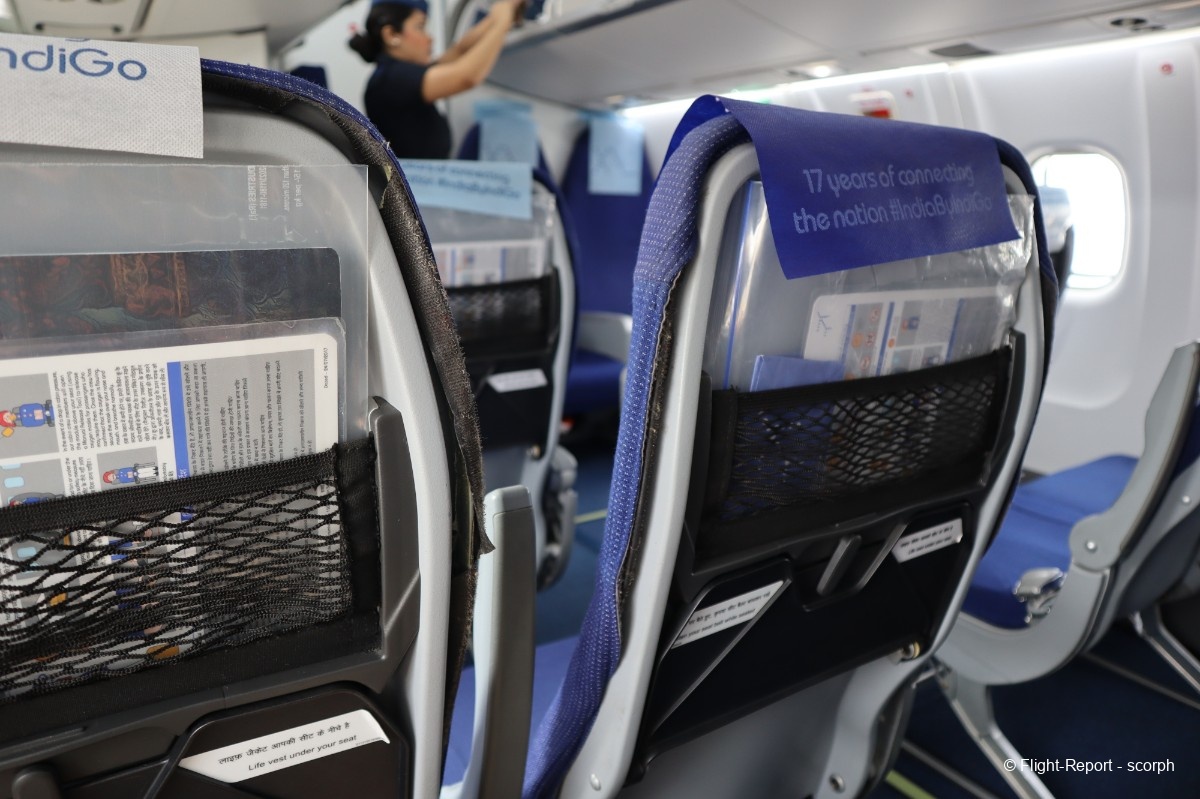
As for the cabin layout, it looks like this with a configuration for 78 passengers (the certified maximum for the ATR72). No surprise, the seat pitch is reduced to only 28 inches.

This is what it feels like for a humanoid less than 1.75 meters tall like I am.
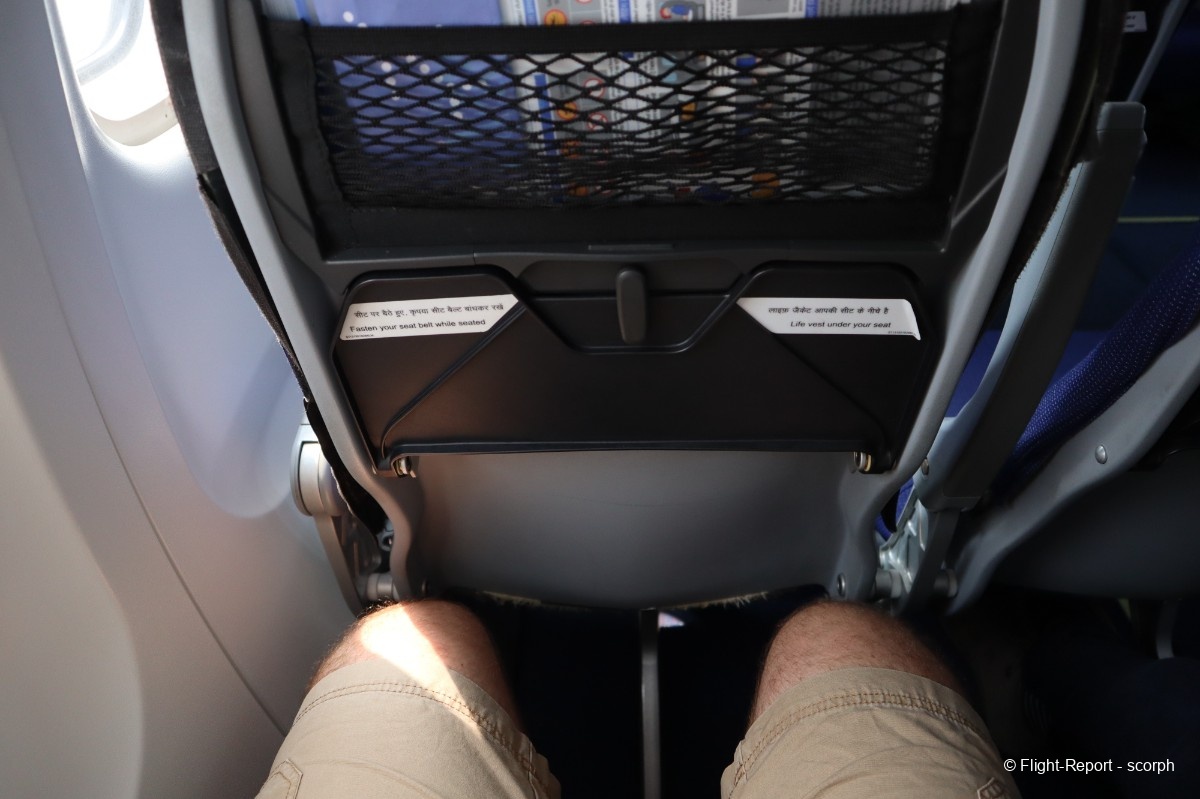
The small pocket contains an in-flight magazine and the safety card.
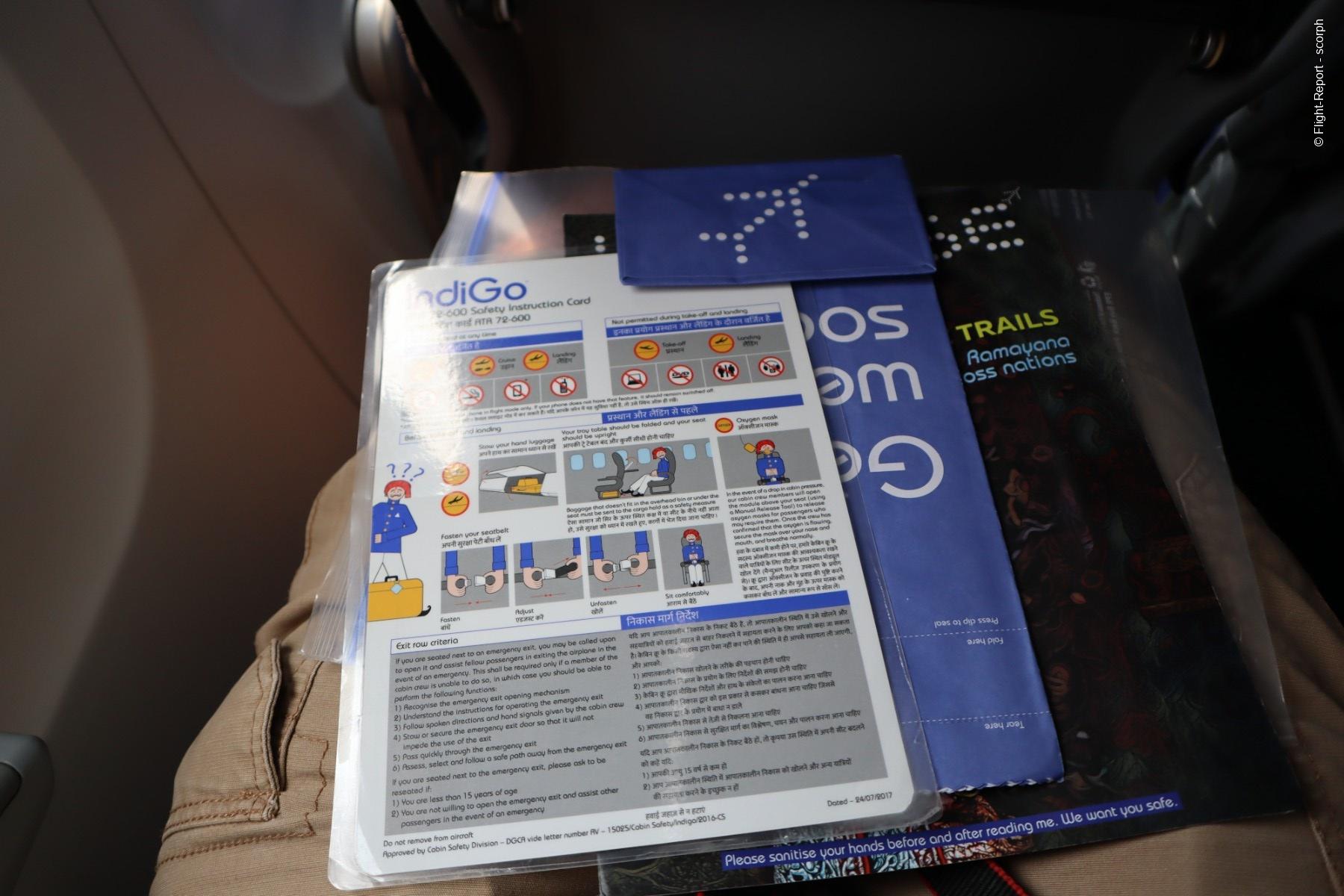
The view through the window is well-aligned but a bit blurry, as is often the case on ATRs.

The cabin will be 3/4 full, mostly towards the rear of the aircraft. There aren't many people in the front. The configuration with the two seats at the front facing backwards, sold at a higher price because they offer more legroom.
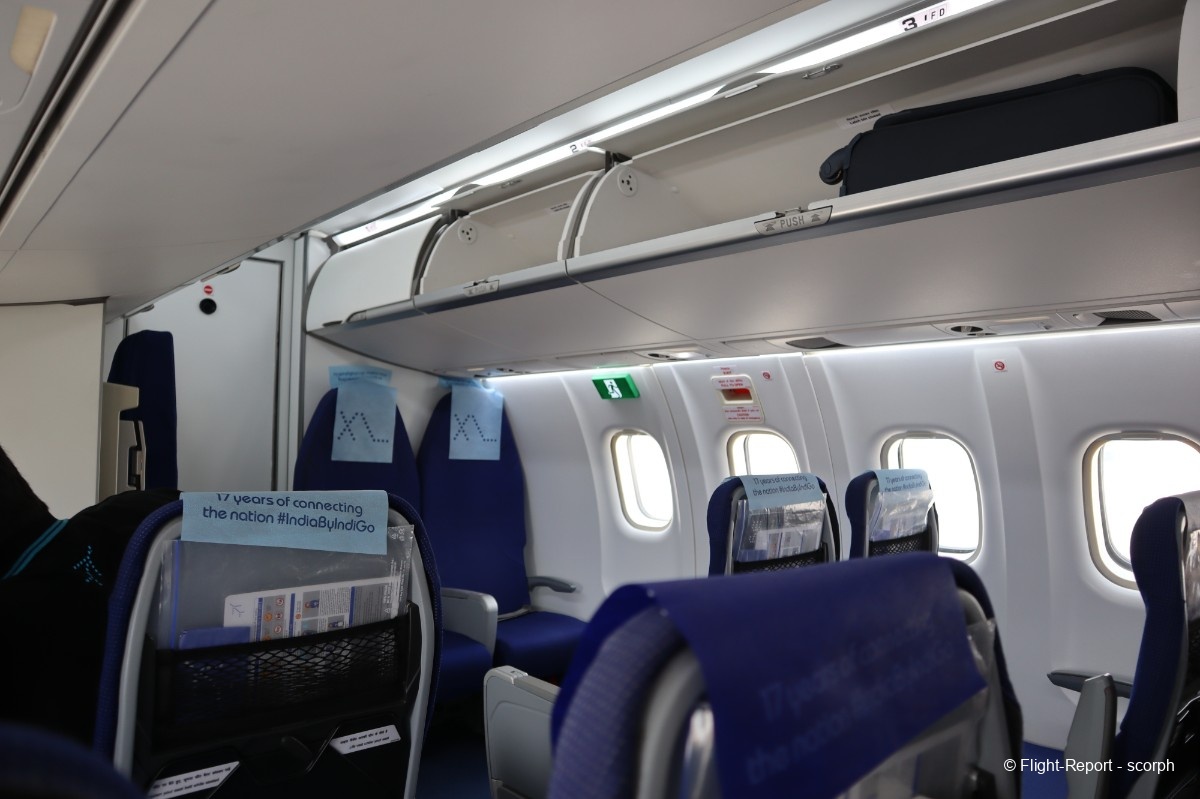
Overhead panel, it features the standard display for the ATR-600.
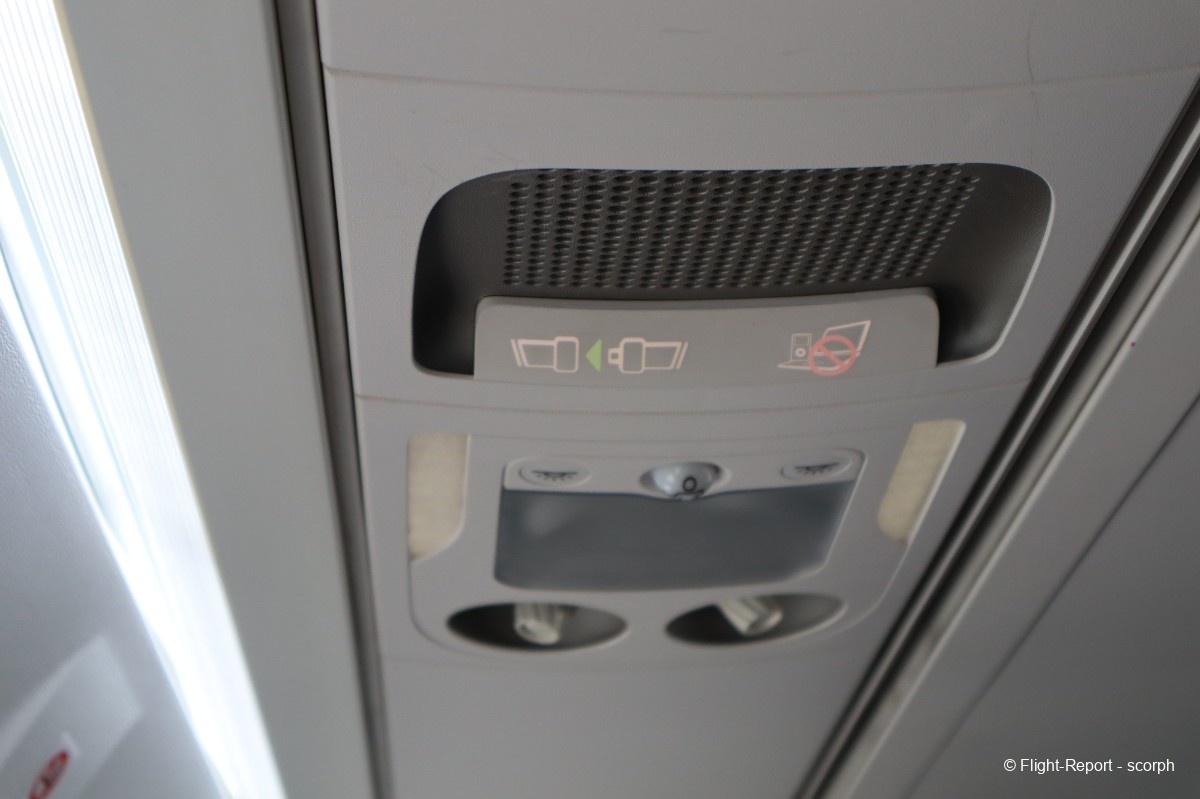
We will push back right on time in front of this beautiful alignment of Indigo tails. Meanwhile, on remote stands of the T1, we mainly find Akasa Air’s Boeing 737 Max aircraft, as well as numerous stored Airbus A320neo from Indigo and GoAir.
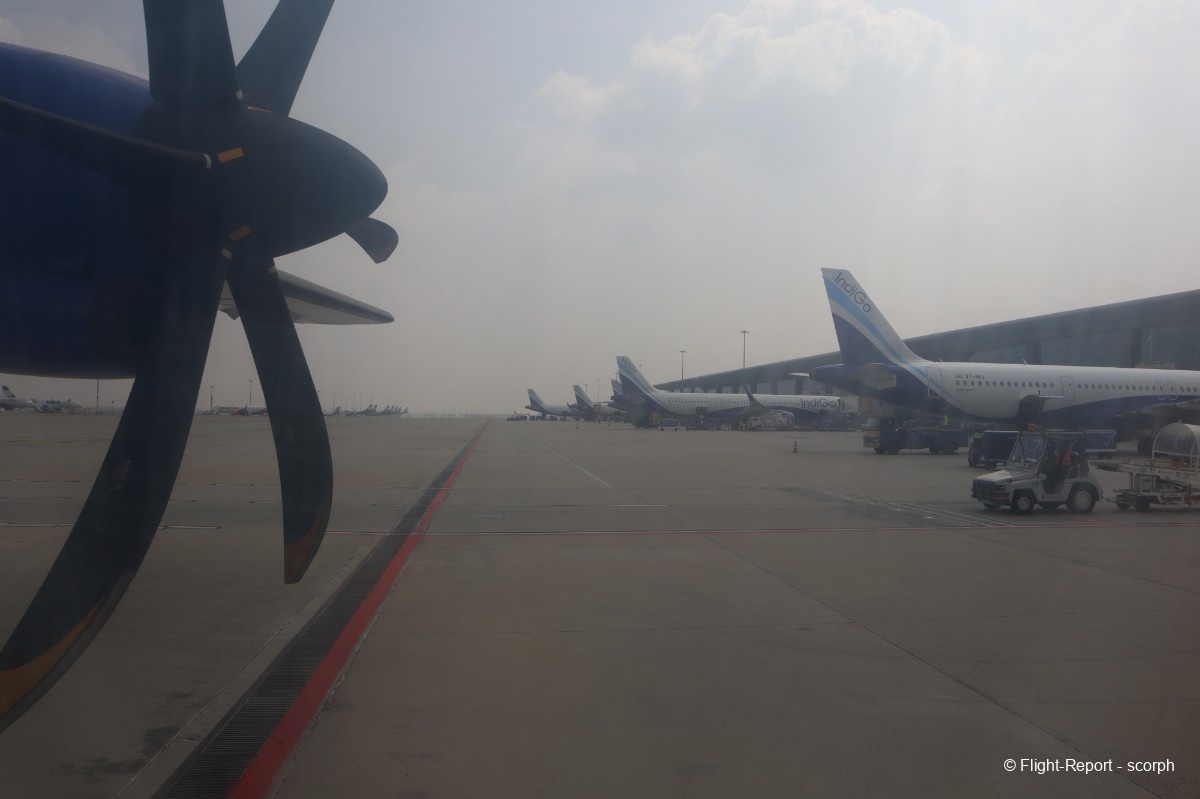
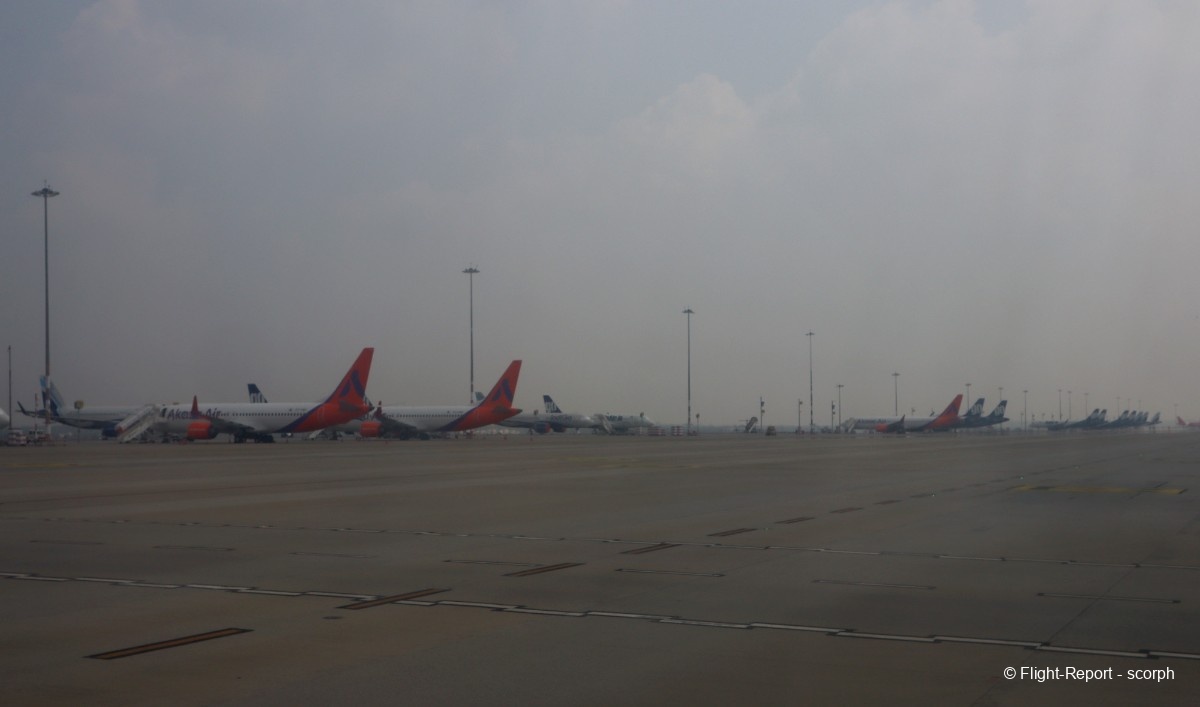
We will end up changing seats mid-taxi at the crew's request because there were no volunteers to take the seat near the emergency exit. Safety standards are not the same everywhere in the world.

We didn’t lose on the change with my partner as we got better pitch, and for the views through the window, the glass was slightly less foggy and better aligned than on the previous seat. The taxi to runway 27R will be rather long, as it’s located at the far end of the airport. I will witness an amusing scene when we are overtaken mid-taxi by another ATR from Indigo…
Indeed, this area has a double taxiway, and it’s the first time I’ve seen an aircraft being overtaken like this, even though we were already at what I would consider a standard taxiing speed.
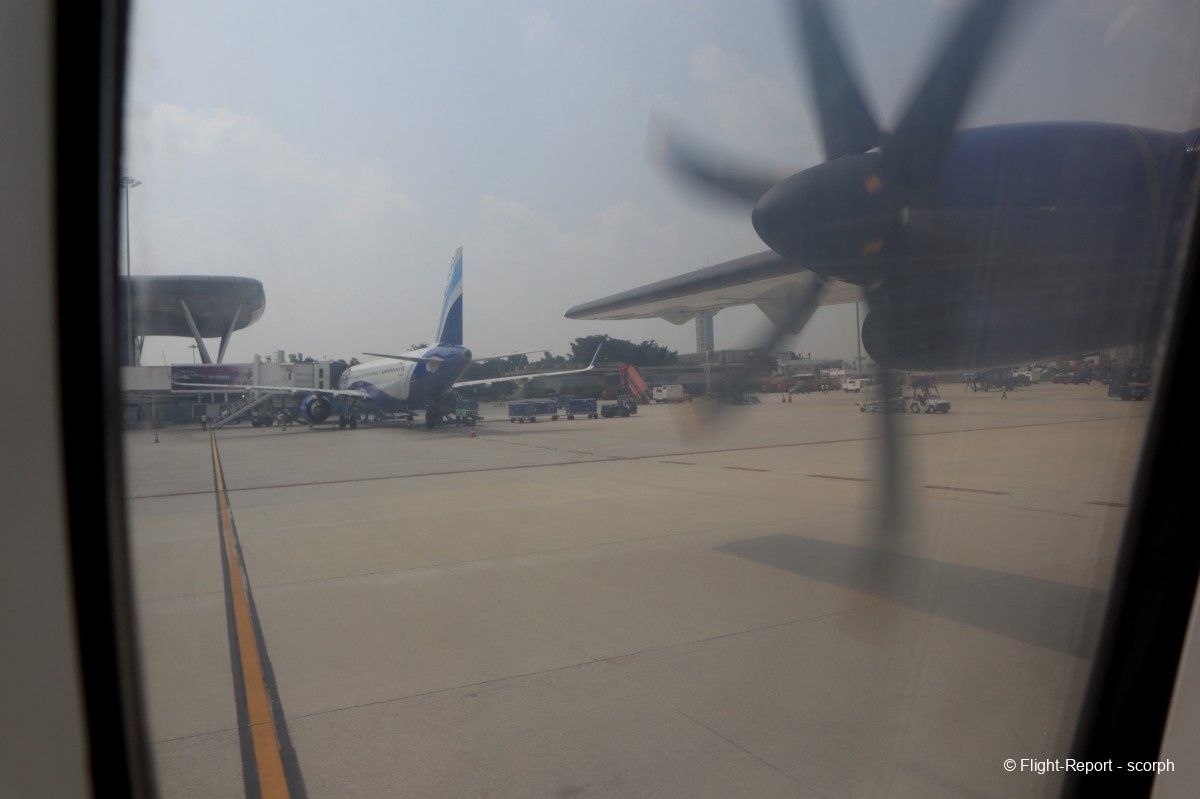
We are taxiing around Terminal 2, where we can see one of the B777-200LRs that Air India purchased from Delta to open flights to the United States from Bangalore. The aircraft in Skyteam livery is a Saudia Airbus A330-300.
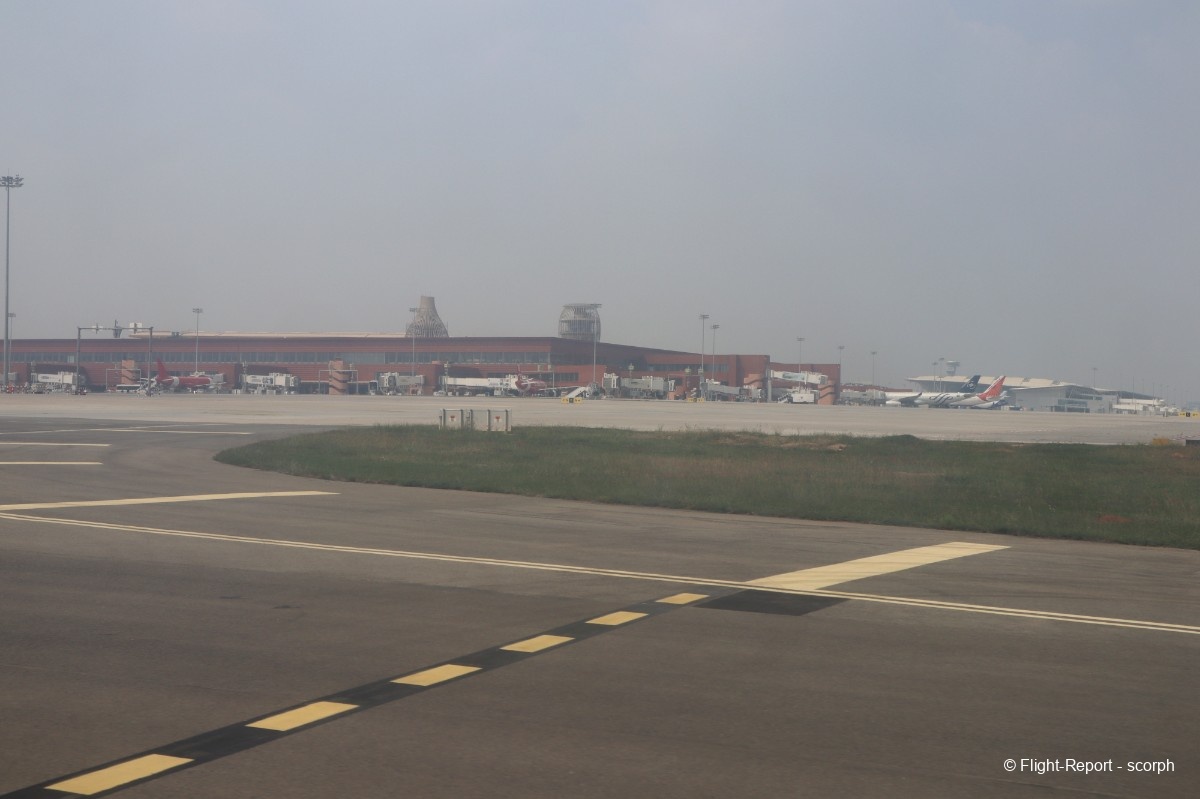
We will have to wait a few seconds at the holding point, the time for the ATR-72 that overtook us earlier to take off.
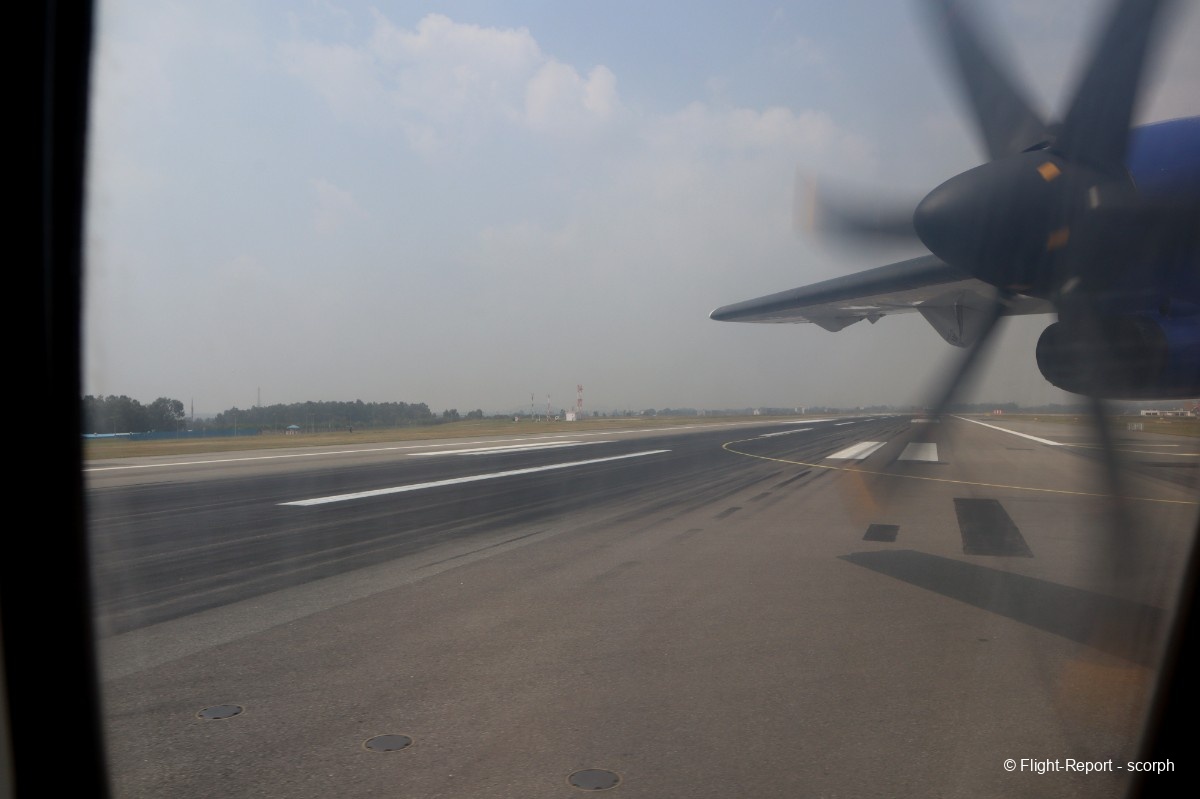
This will be our turn a few minutes later with that typical, rumbling propeller noise unique to turboprops, which I must admit, really like.
As you can see, Bangalore's airport is (for now) in the middle of the countryside. It was moved in 2008 due to the explosion in air traffic, as the old airport was caught up in the sprawling and ever-growing urban expansion of the capital of Karnataka state. It is located nearly 30 kilometers from the city center. It is now the 3rd largest airport in India, with over 33 million passengers handled in 2022.
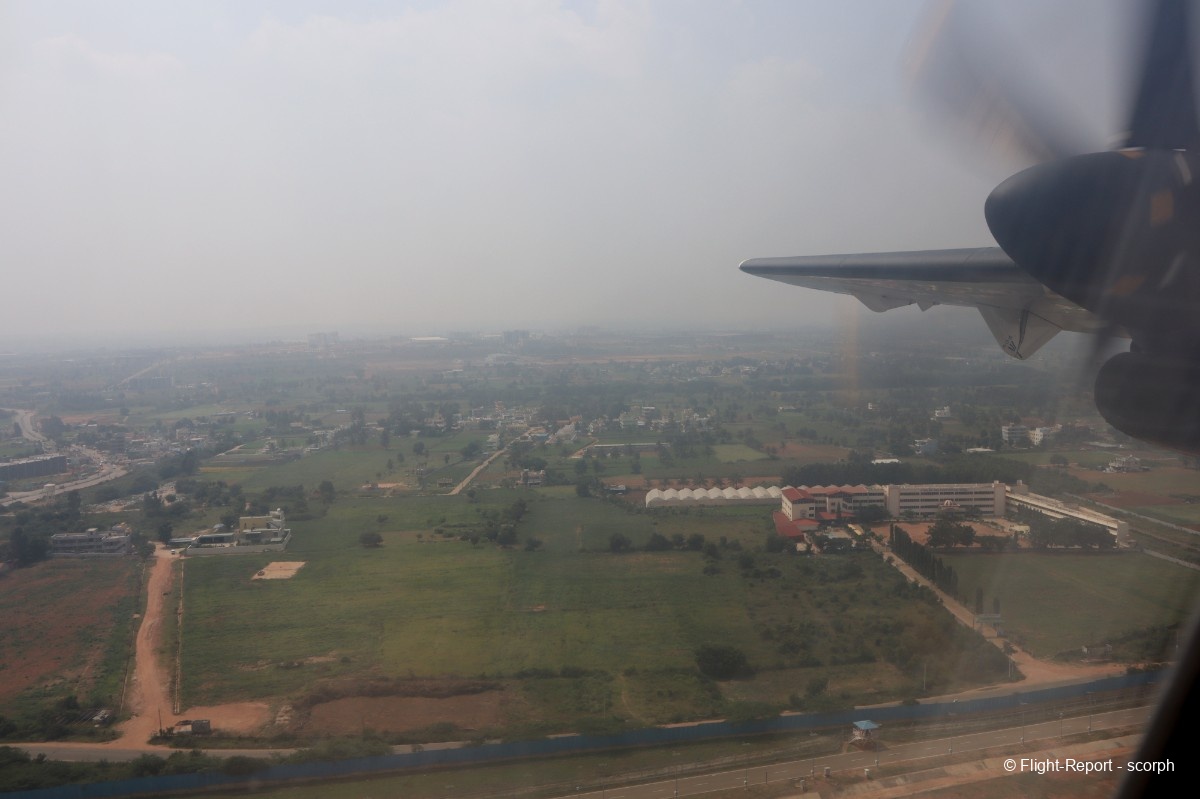

After a right turn heading south, we will fly over the eastern edge of the sprawling metropolis that Bangalore has become.
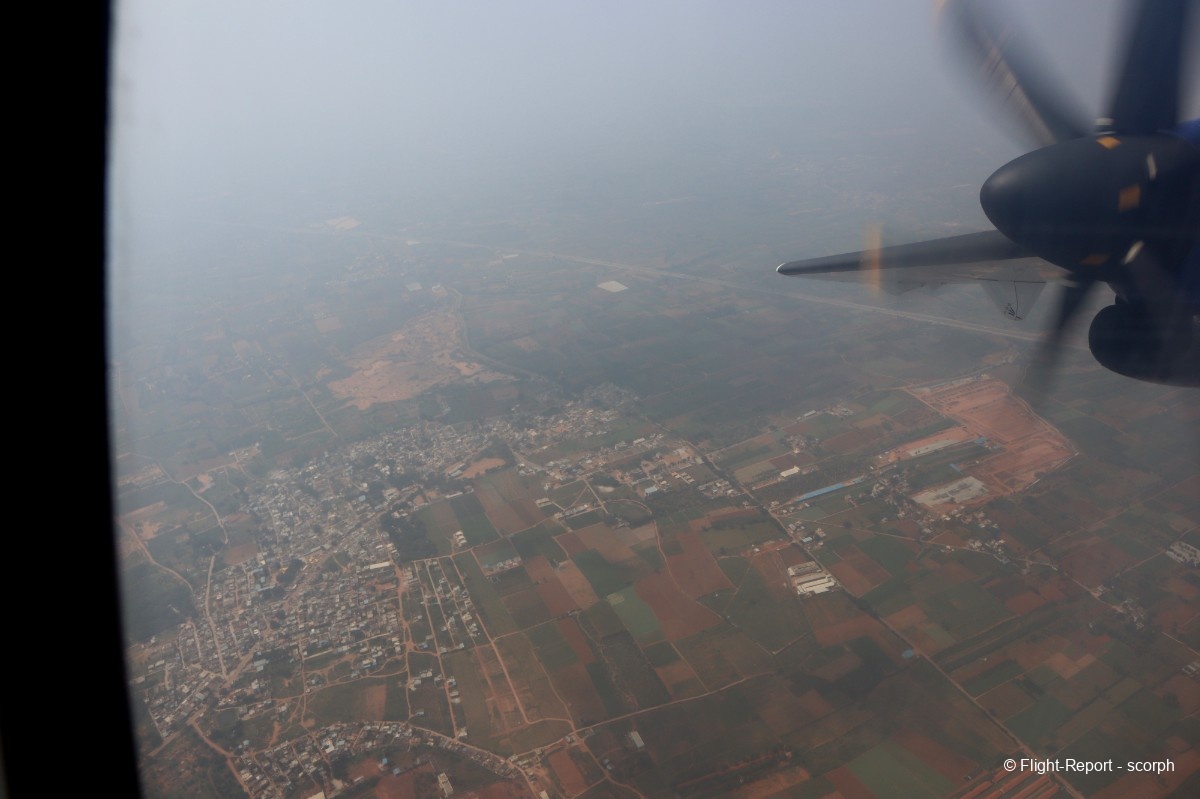
The flight attendants will pass through with the trolley, quickly serving the products ordered during the booking. They will then make a round with a tray and paper cups filled with water, a friendly touch for a low-cost airline. Paper cup provided by Indigo show some fun-facts where you have to find the good answer.
I give a try to row 1 seat. It’s worth mentioning that these seats are standard on all ATRs and are actually much more comfortable than the seats in the rest of the cabin…
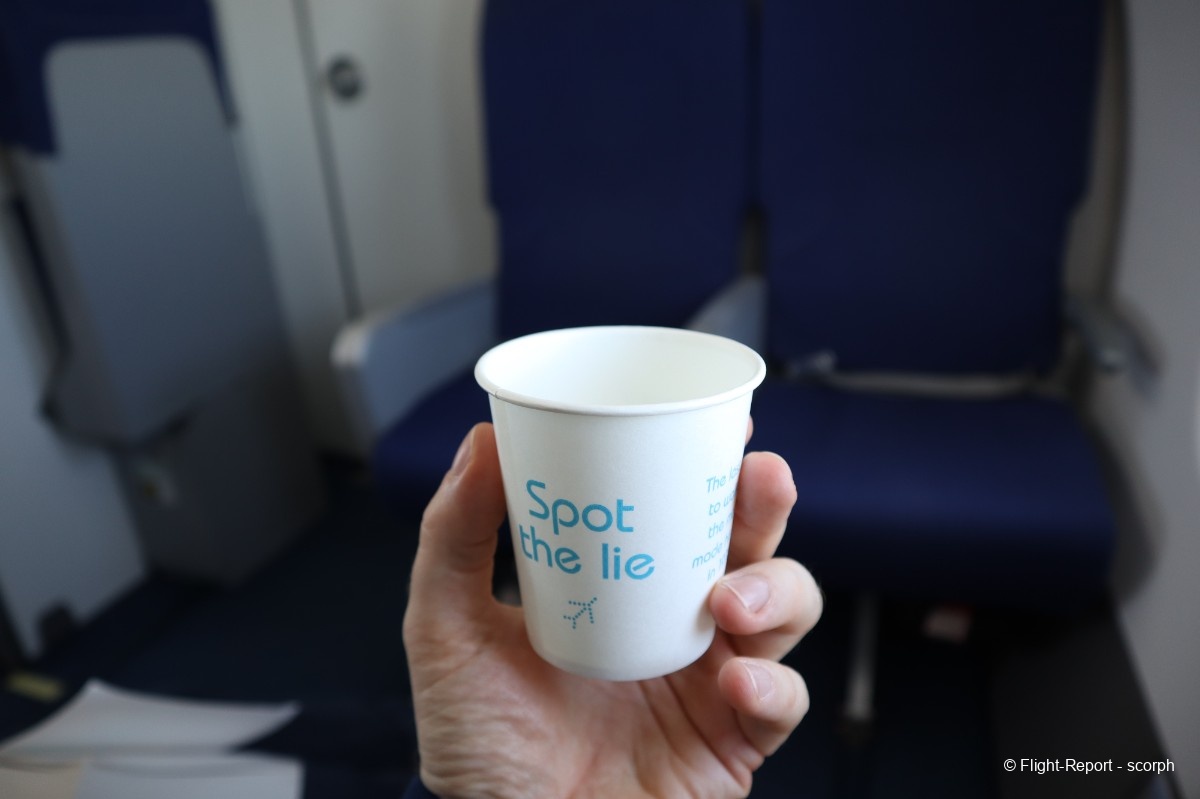
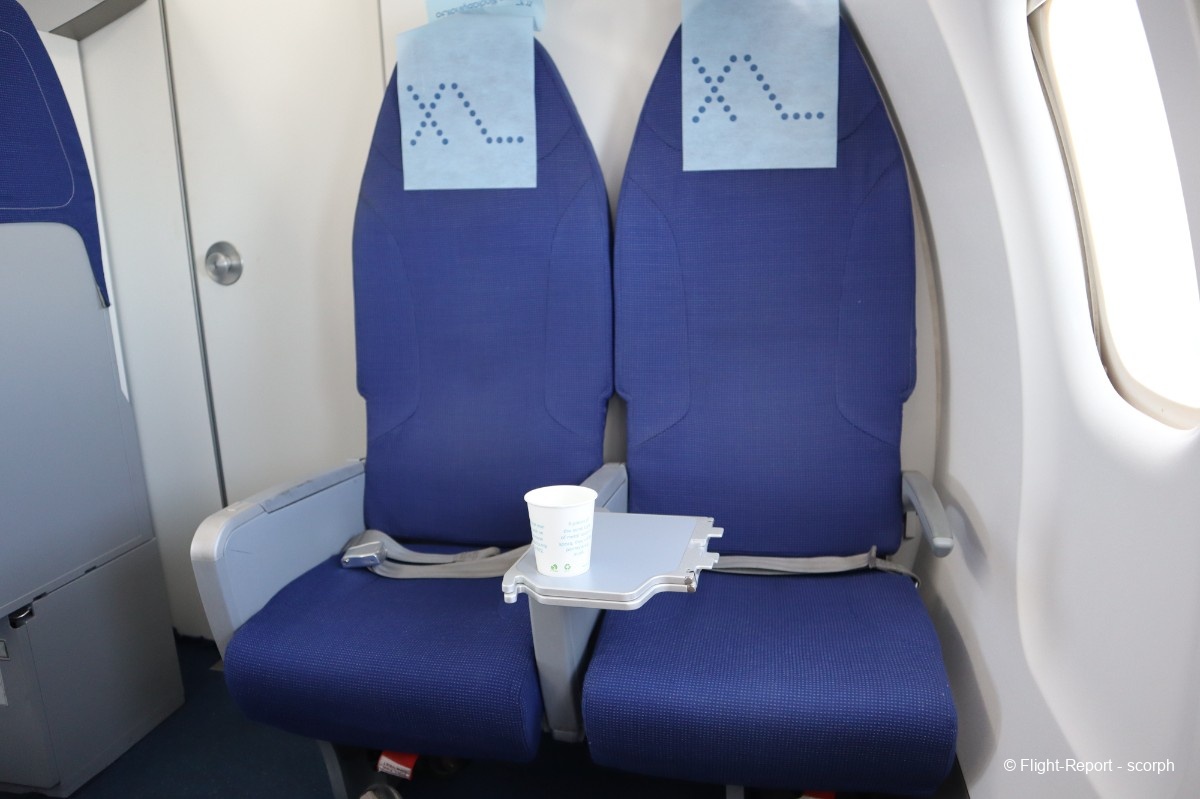
Our cruise flight will continue smoothly and calmly. Our pilot will make a long announcement in English, Hindi, Kannada, and I believe Tamil as well, covering the two 'official' languages of India and the languages of the flight’s origin and destination. It’s not uncommon for Indians to speak three or four languages daily, often with very different alphabets.
Our captain will also have a fifties movie star look, short and lean, pilot’s cap firmly on his head, with Ray-Ban sunglasses, and super smiley ! You can tell the guy does this every day, but still enjoys it like an 8-year-old kid! He’ll also perform the two aircraft ground inspection at BLR and IXM, a task often handled by the first officer in some airlines.
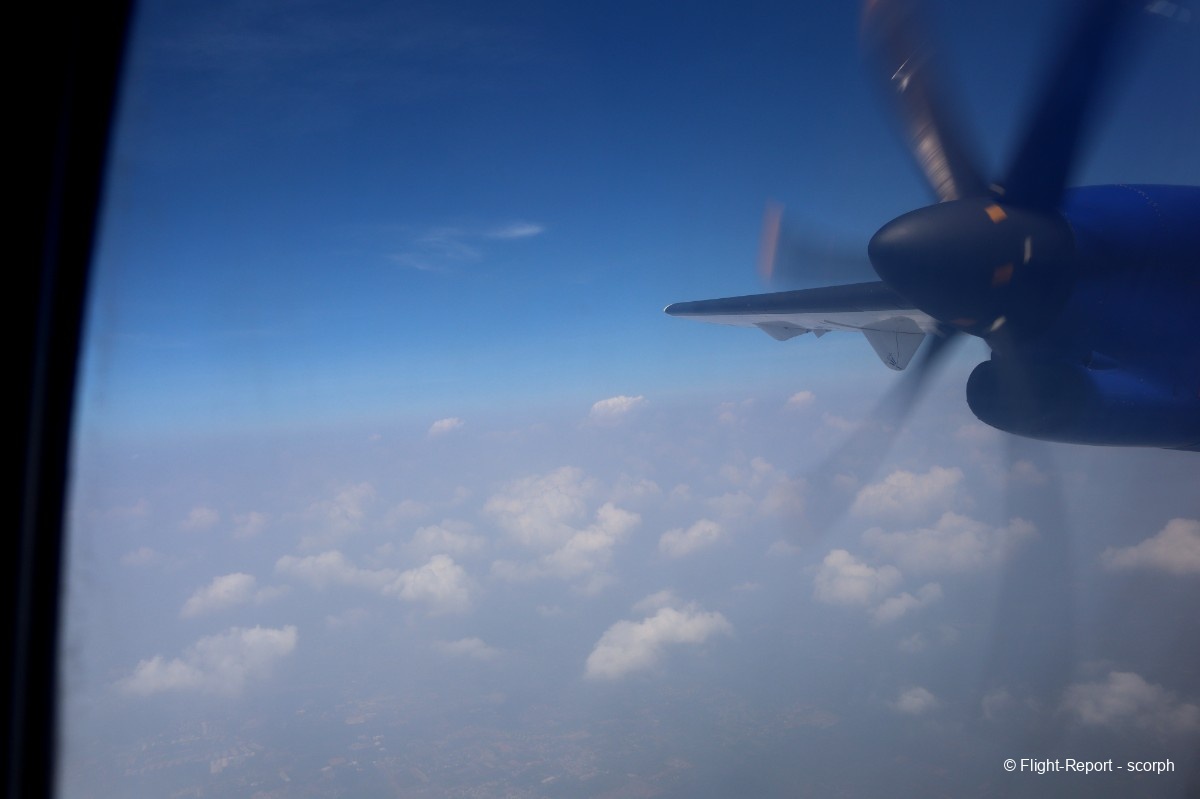
The route taken by our flight was almost a straight line south. The same journey by train would have likely taken us nearly 20 hours.
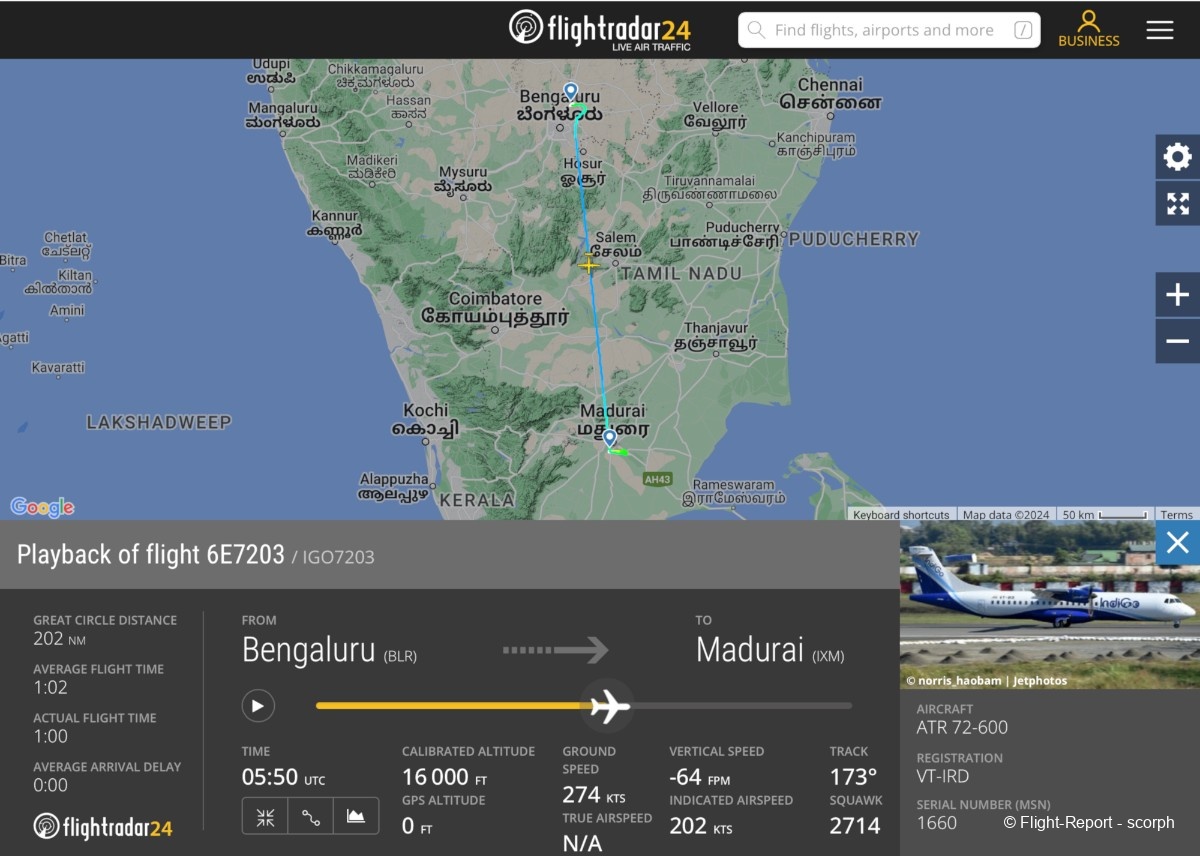
The flight lasts barely an hour, and soon our descent is announced, also in three languages (English, Hindi, and Kannada)
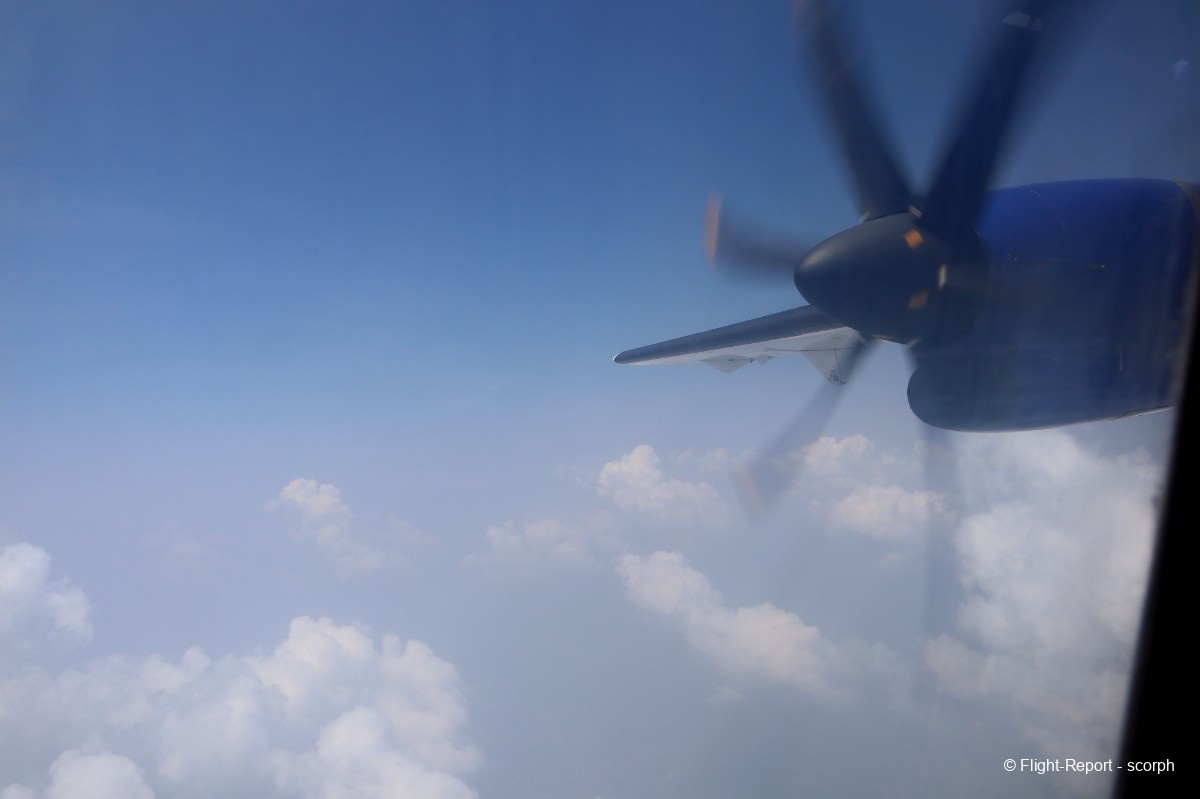
The land finally appears through the mist as the noise of the propeller fades. A strange thing is visible on the FR24 track. We will make a vertical over the terrain before beginning an approach from the East.
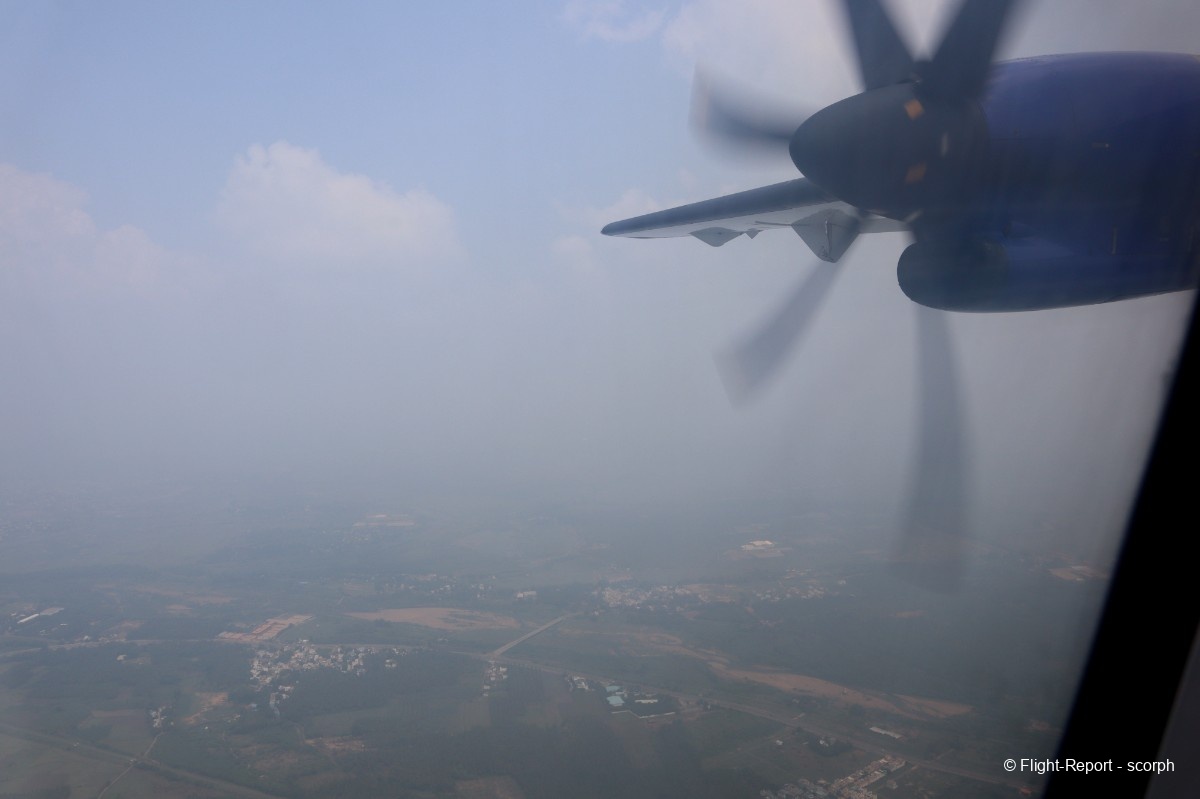
This will take us over the Visai River, which runs through the city.
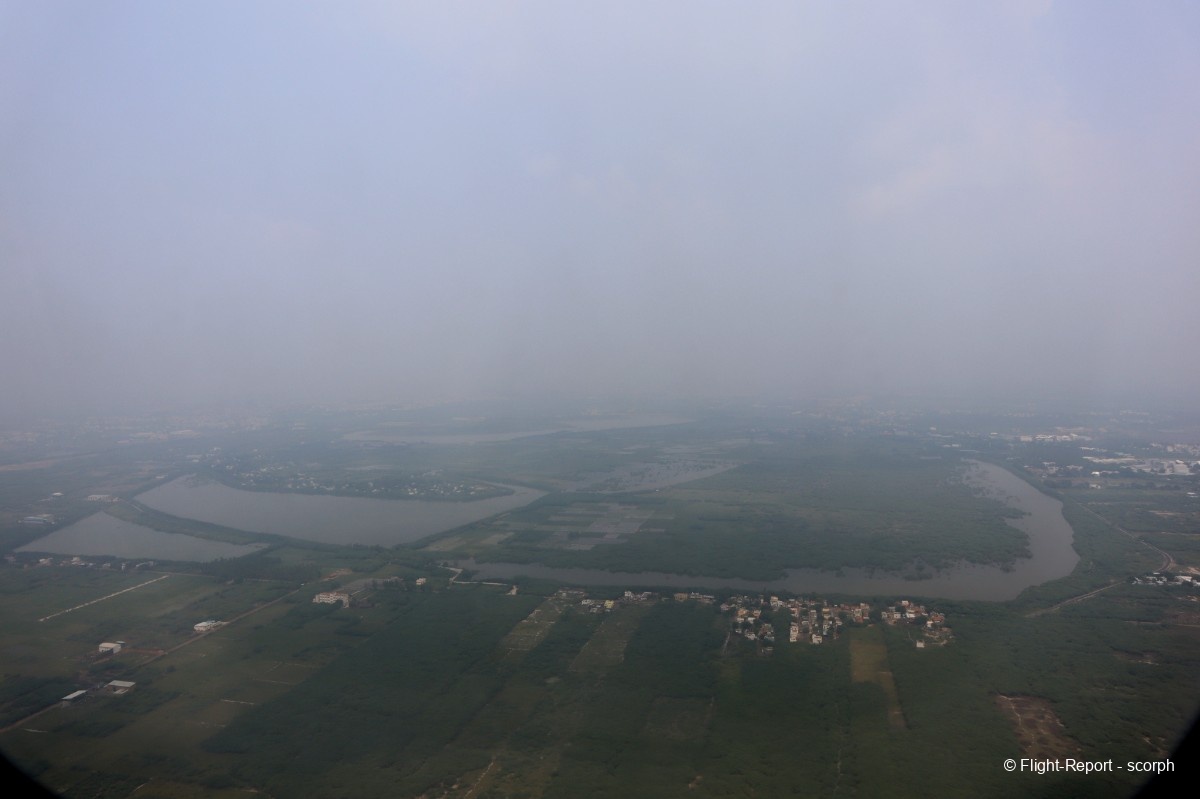
After a nearly 360° turn, we are now on final for runway 27.
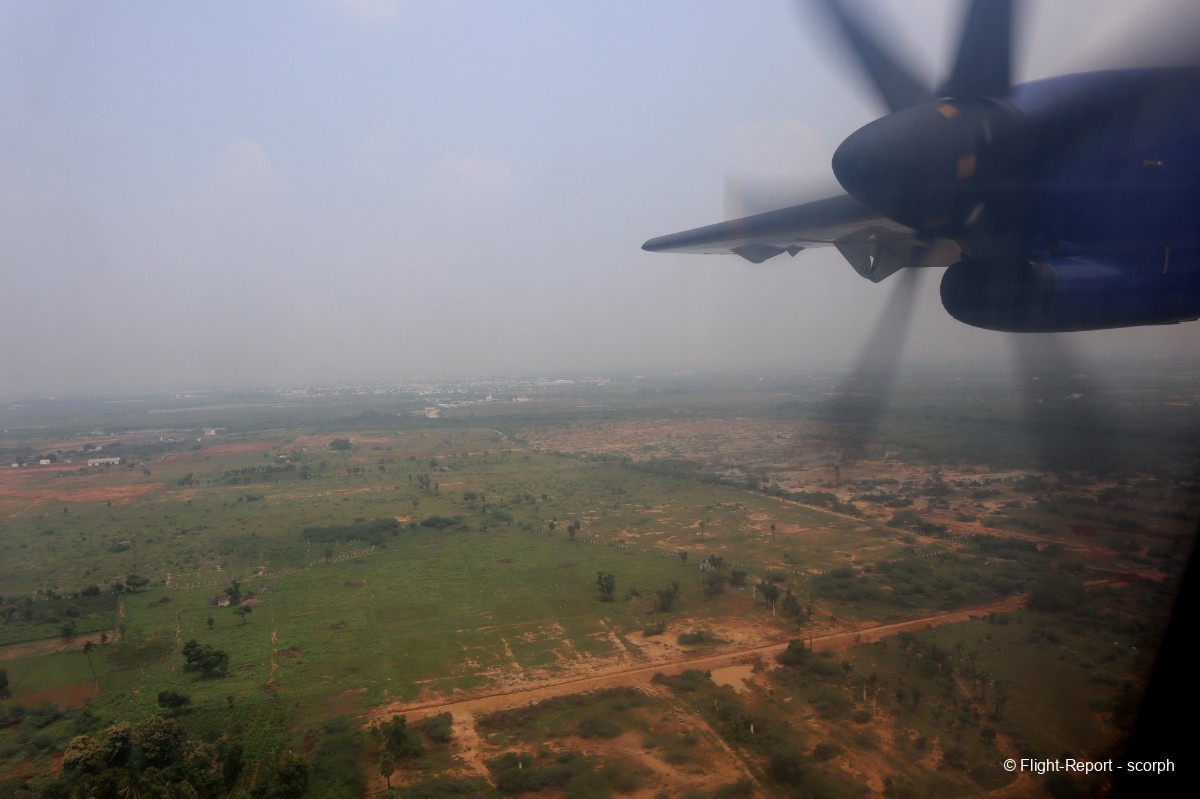
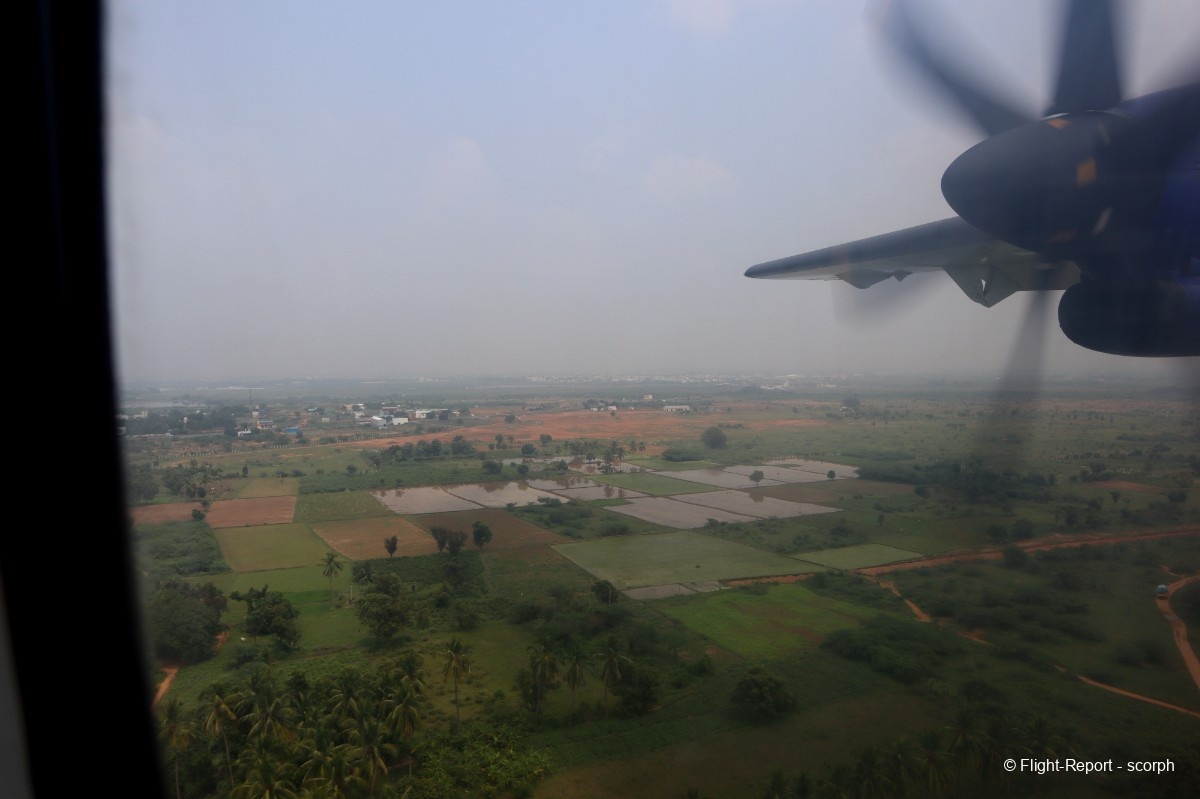
Landing on Madurai heat
Smooth landing, with moderate braking, the conditions are good, but clearly, our pilots are too!
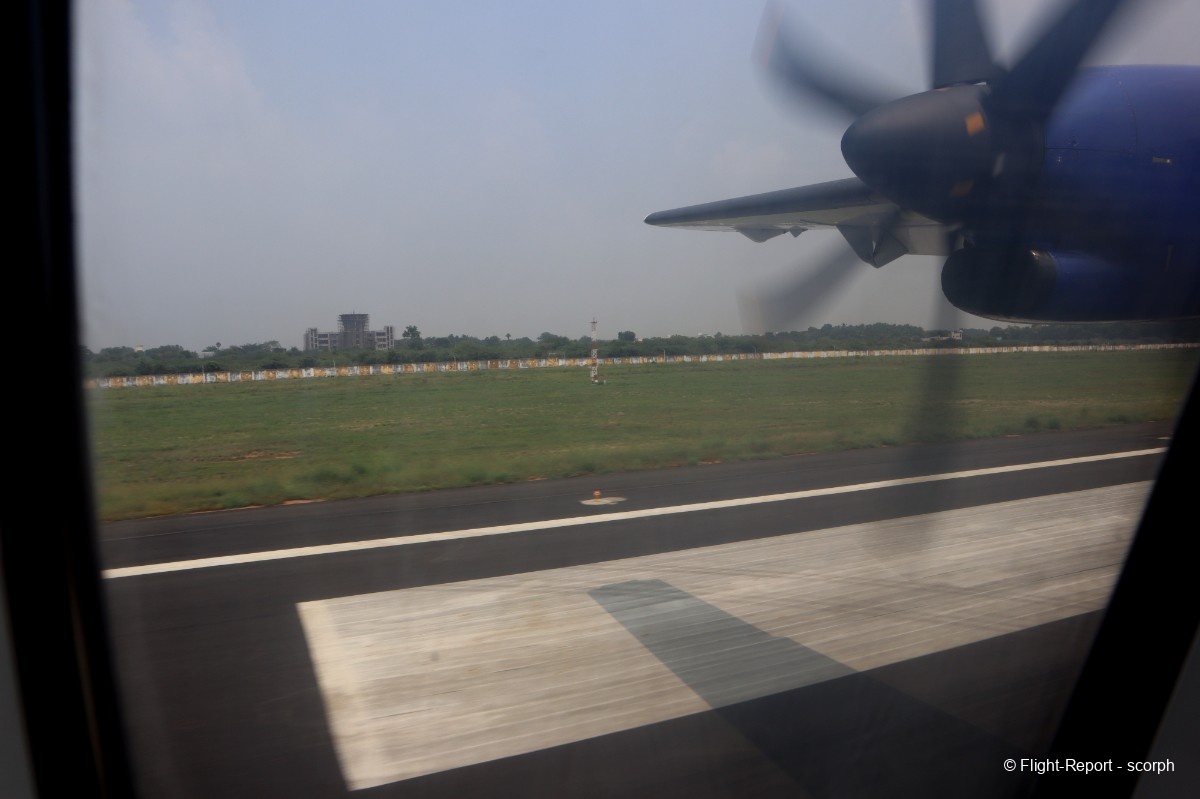
We pass close to this SpiceJet Boeing 737 Max-8, painted with an advertising livery, heading for a flight to Dubai one of the many connections between Southern India and the Gulf countries, where millions of Indians works.

There is no taxiway, so we have to turn around on the large area at the end of the runway and then taxi on the opposite direction on the runway to reach the parking. At the other end of the runway, we can see the SpiceJet Boeing 737 Max doing the same thing in the opposite direction to align for takeoff.
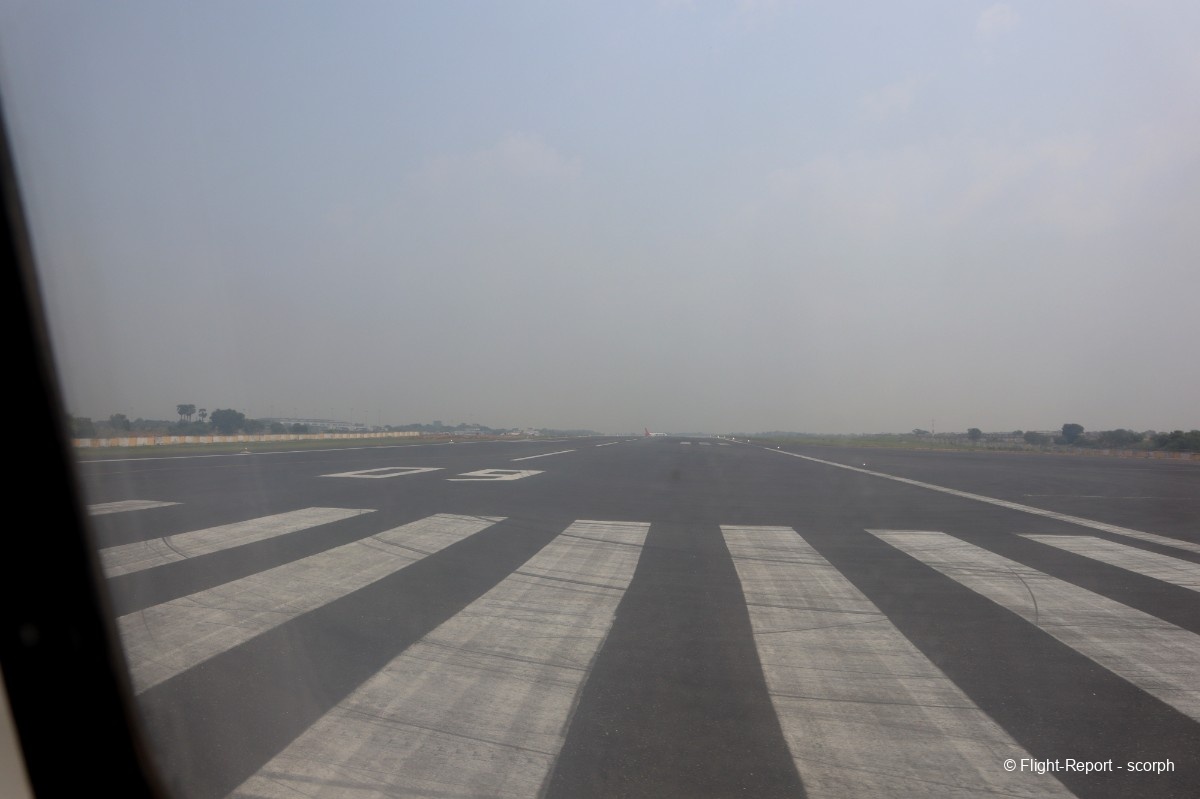
In the parking area, in the distance, we can see the beautiful BT-67 Turbo Basler from Bell Geospace. Registered in Canada, this relic of aviation is equipped to detect anomalies in the Earth's magnetic field and gravimetry, which helps identify potential mining exploration zones, whether for minerals or oil.
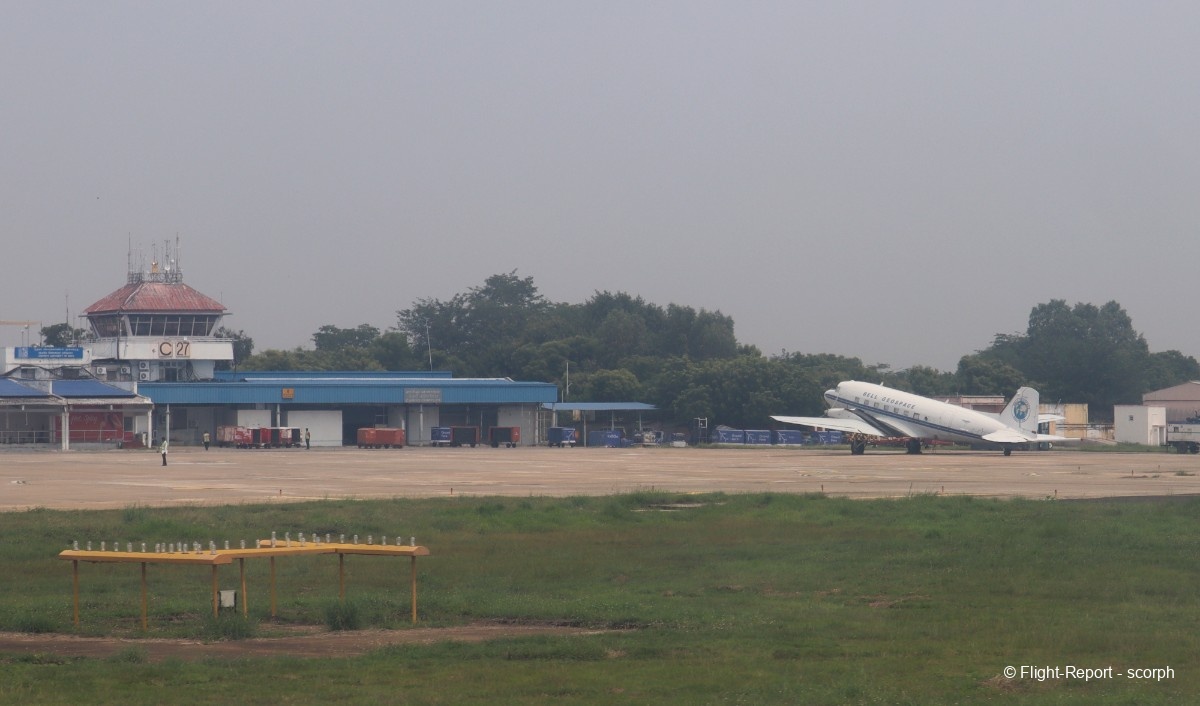
SpiceJet still operates a small fleet of Dash-8 Q-400s that are airworthy… including this one, which is making a rotation from the capital of Tamil Nadu state, Chennai.
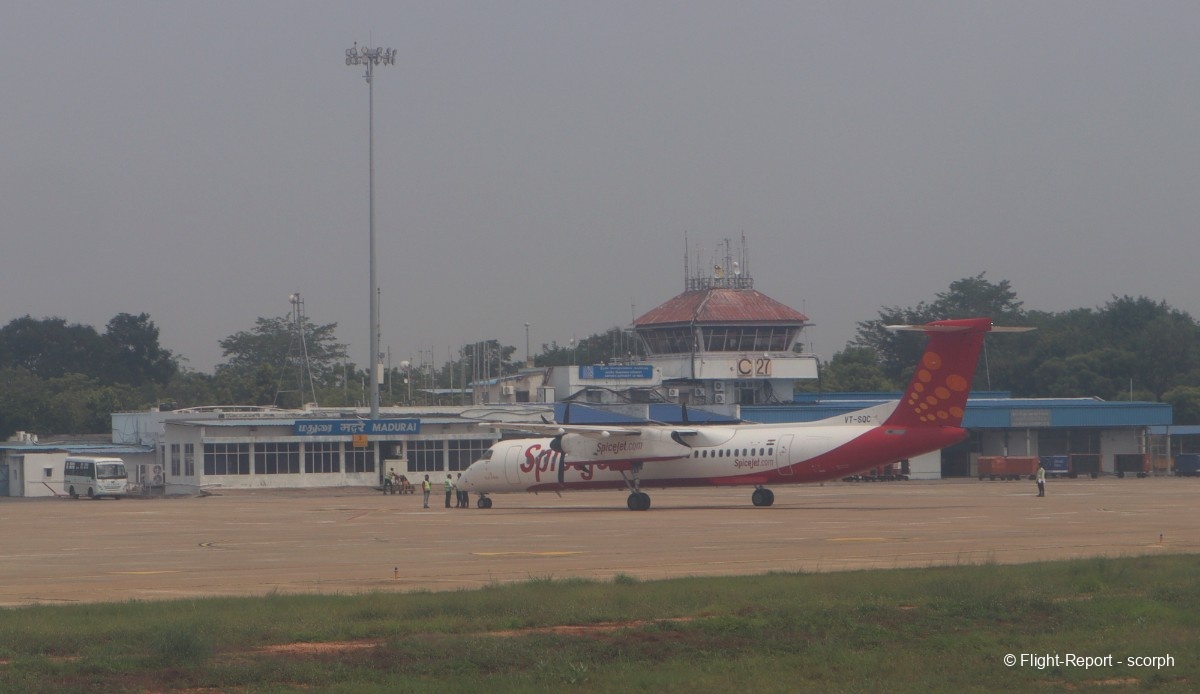
On our side, we are heading to our parking spot in a remote position close to the terminal.
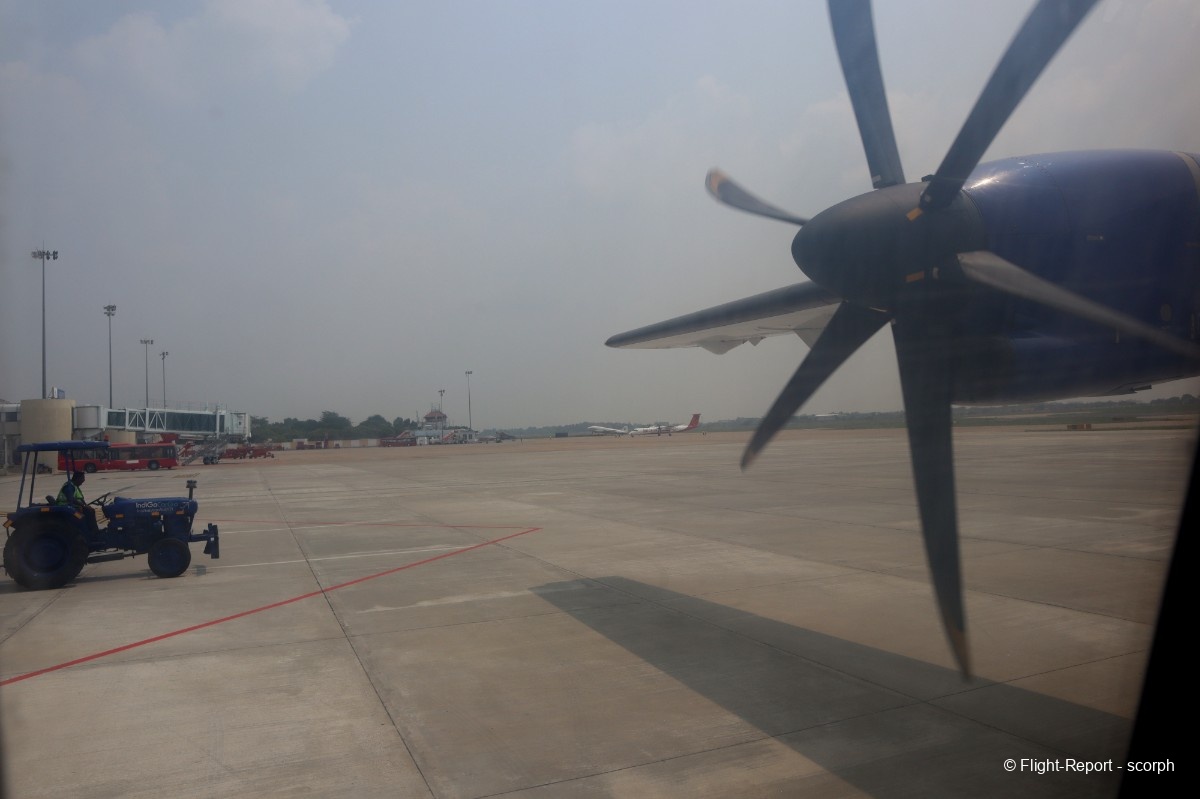
Disembarking operations will begin shortly, as is typical on an ATR, in reverse order, from the rear to the front.
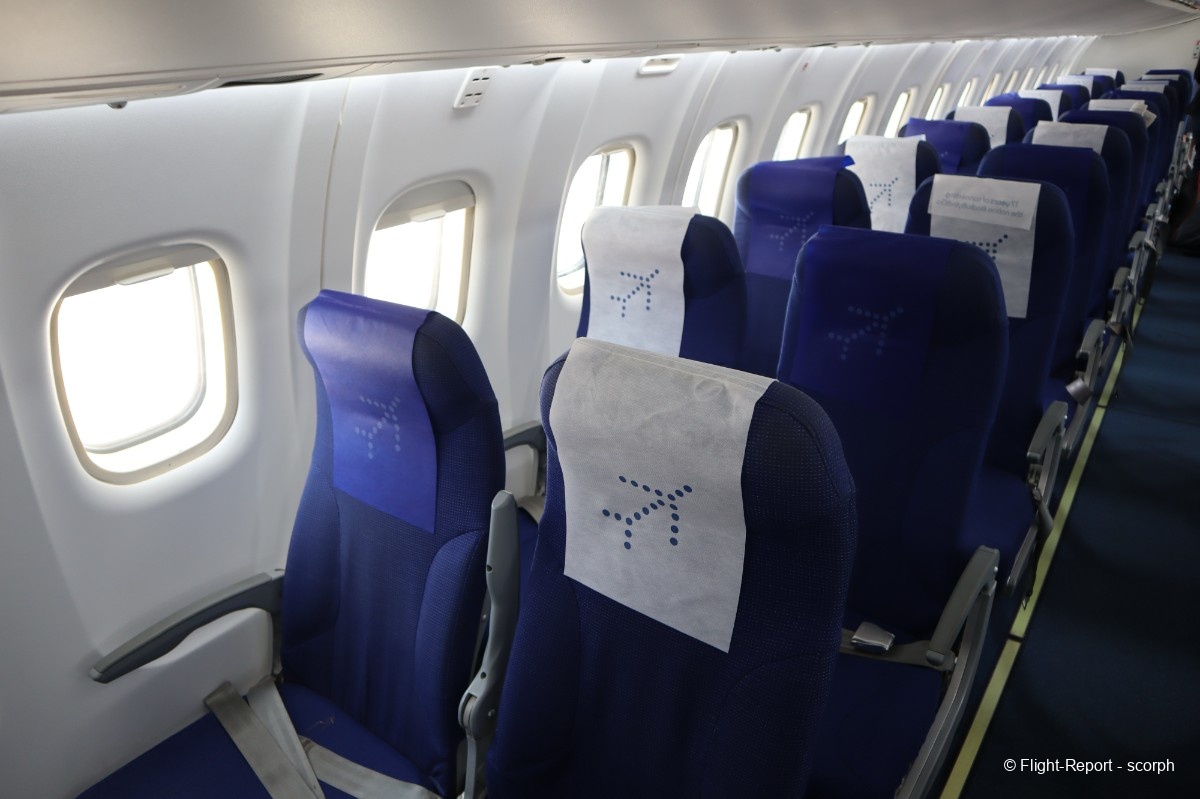
Fuselage shot and smiling greetings from the crew. And then, a plunge into the heat and humidity of this midday in Madurai.
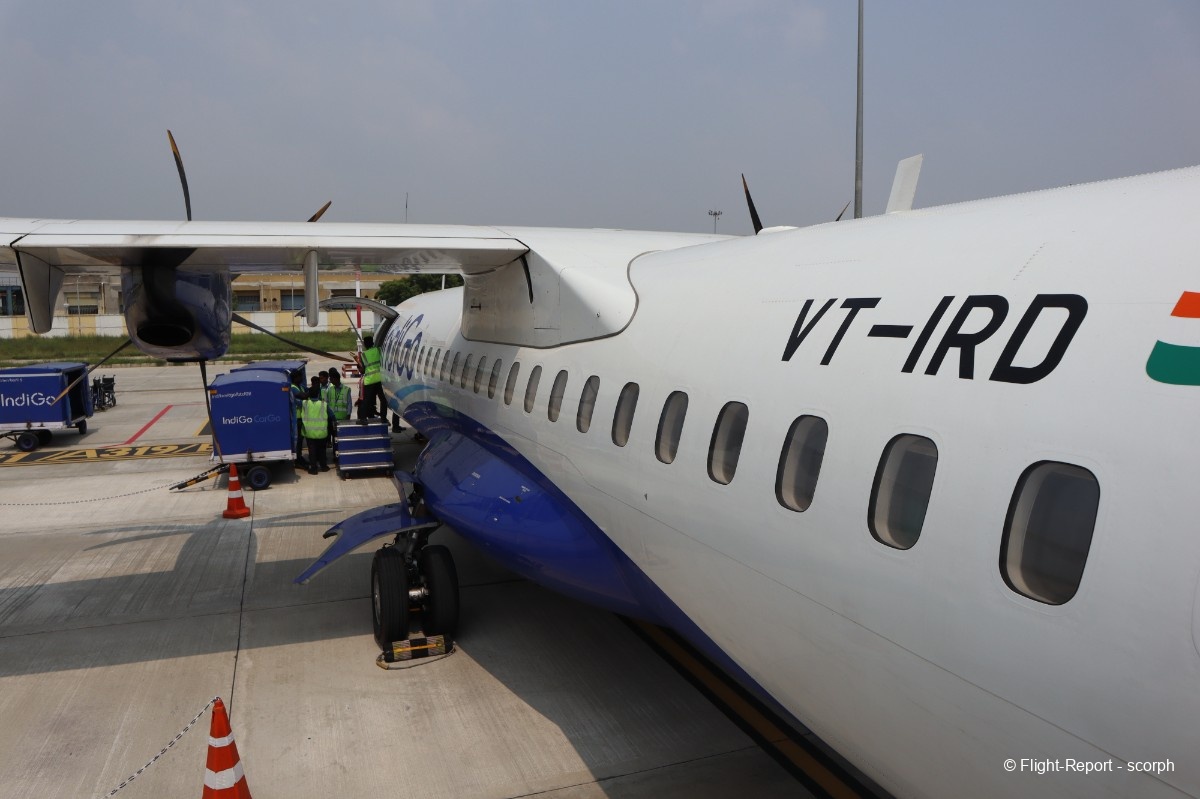
The ground crew is working around our aircraft, here too, there is a good number of ramp agents coming to unload or take care of our ATR.
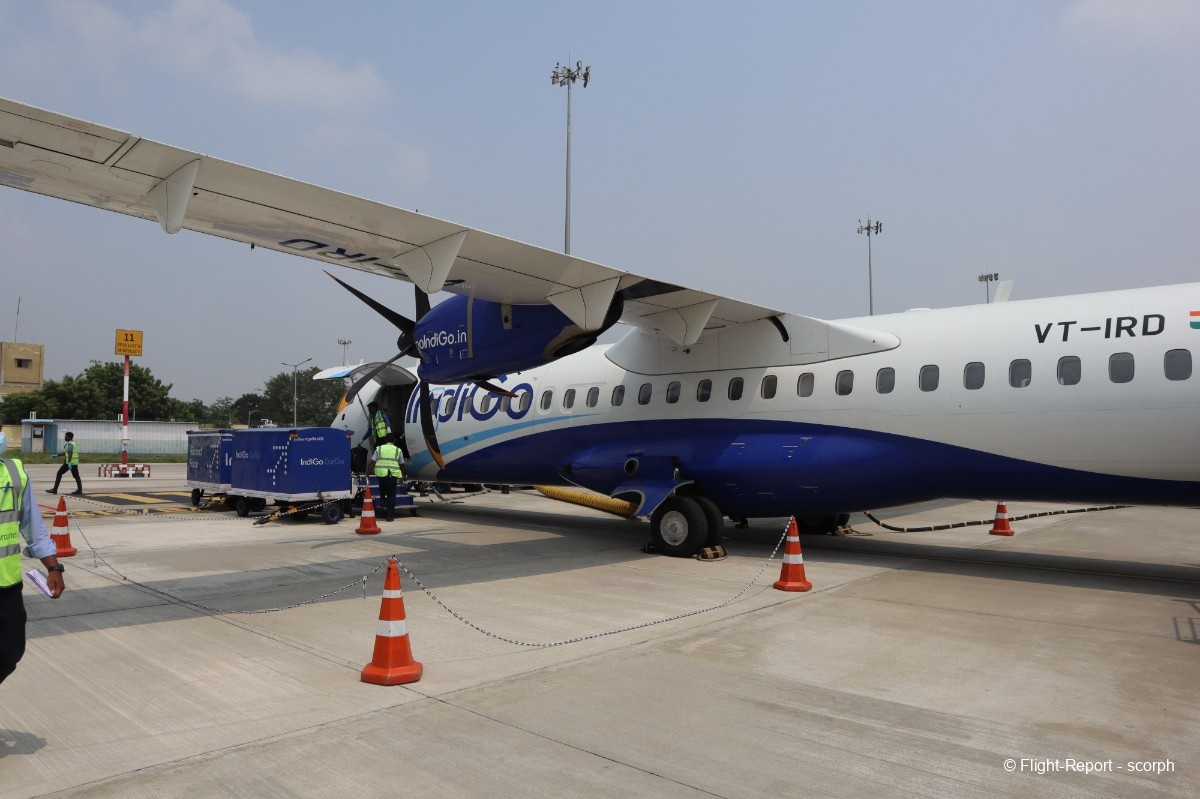
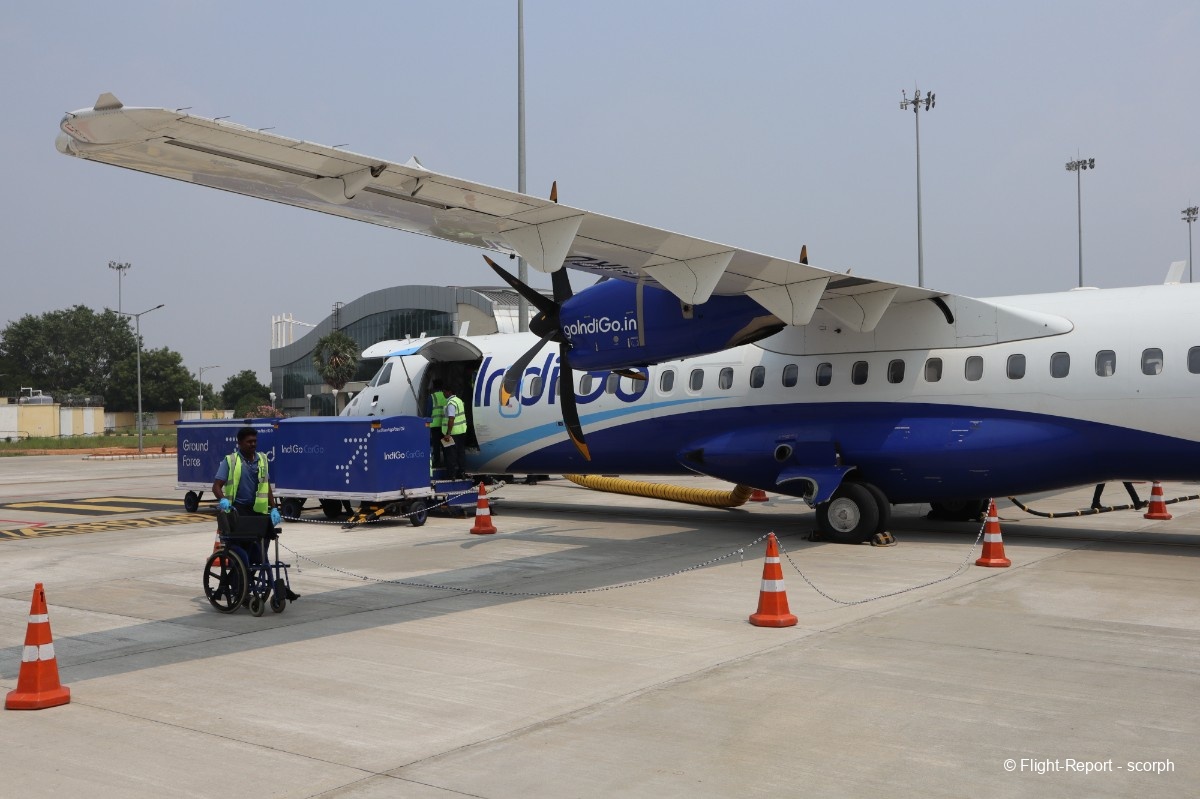
It should be noted that Madurai is also equipped with small mobile ramps, which are designed to assist with the disembarkation of passengers with reduced mobility.
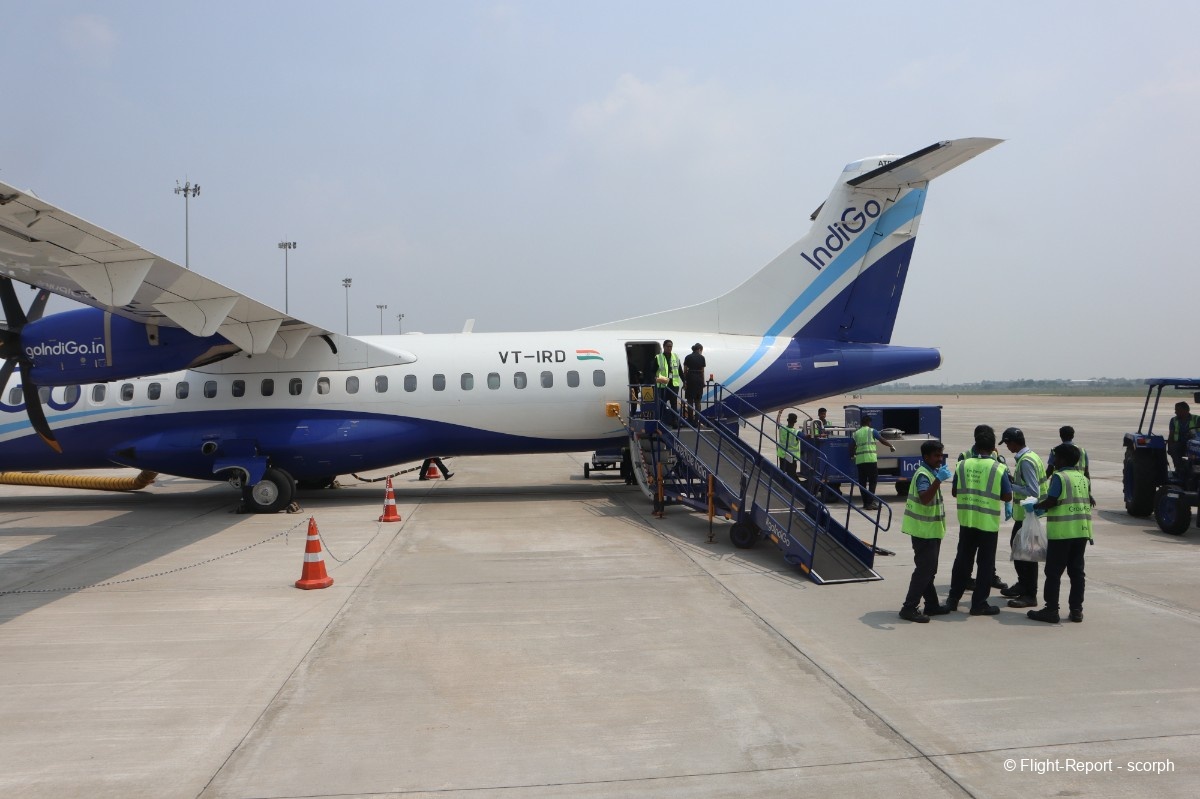
A slightly wider view of our aircraft and a general shot of the terminal, which seems fairly new, like many airport terminals in India, you really get a sense of a country in the midst of an aviation boom. A small note about the ground handling equipment, all painted in Indigo’s colors. From the baggage carts to the small Mahindra tractor (which remind me remote airport in France).
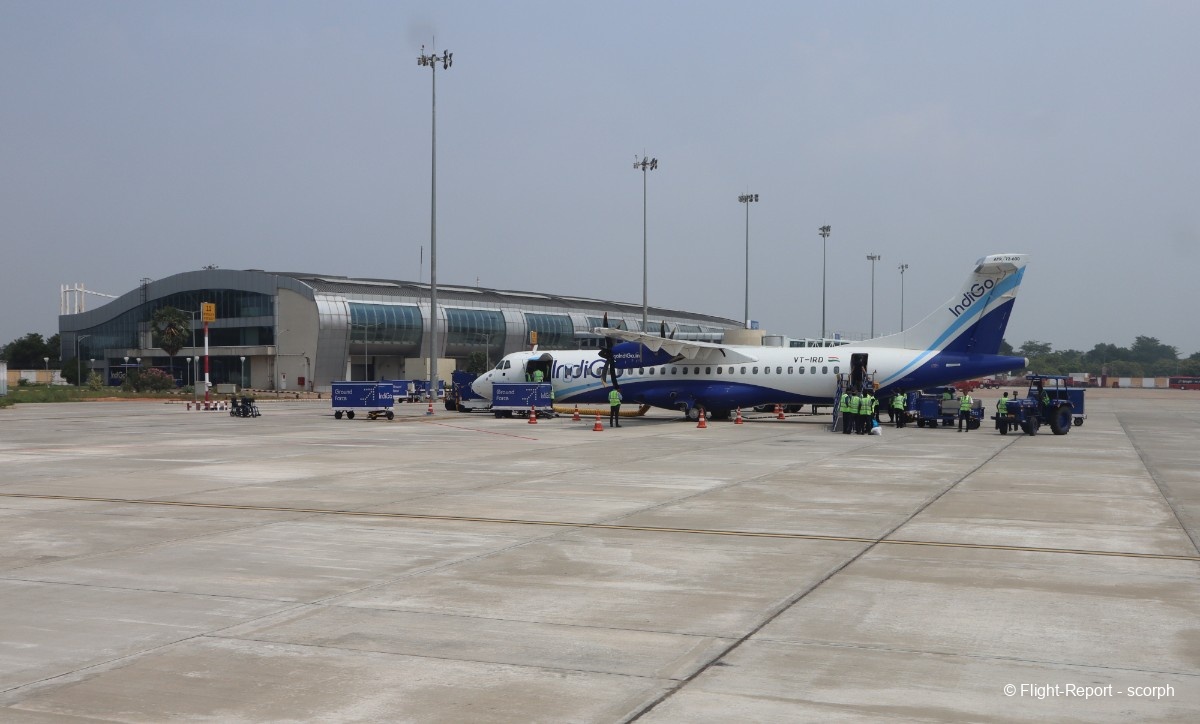
View from the terminal. As you might have guessed from the sequence of photos, we took a paxbus for a short ride of about 200 meters. This will be the last glimpse of today’s bird, have safe flights, Romeo Delta!
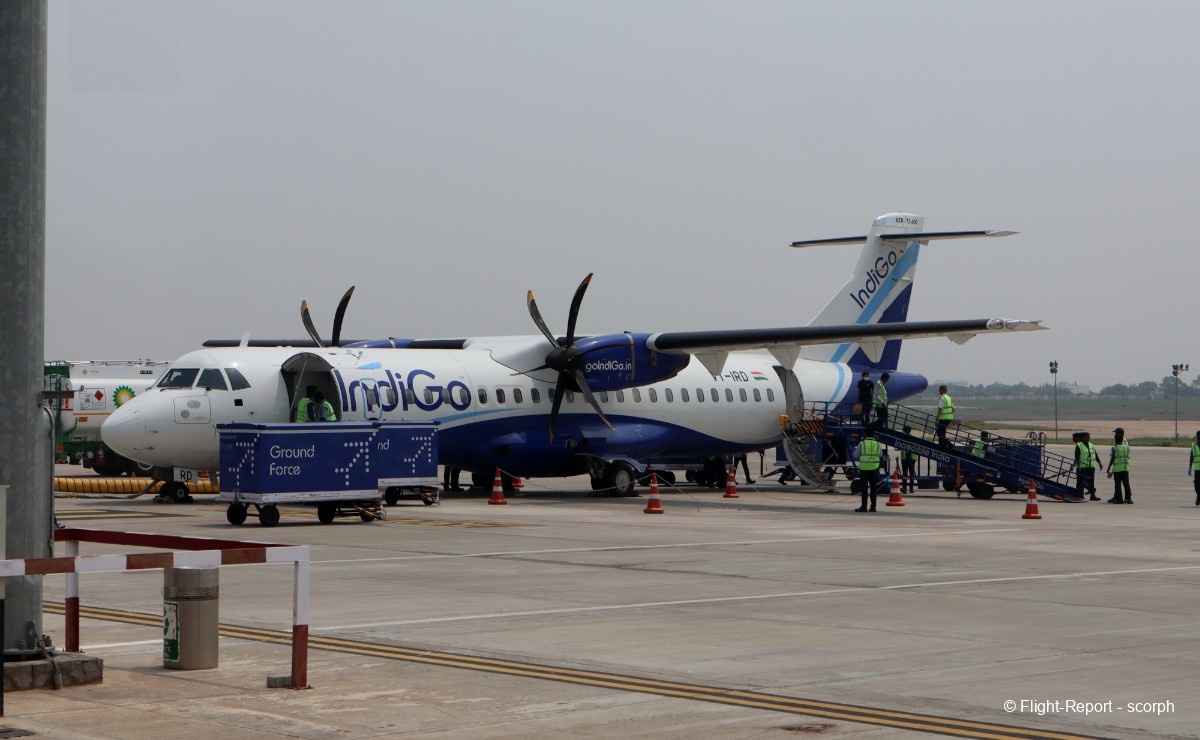
You could say the passenger flow is well-optimized here: we exit the bus, pass through the terminal door, and immediately find ourselves in the baggage claim area. Perfectly arranged, our conveyor belt is the one right in front of the entrance. We only have to wait a few minutes to collect our two checked bags.
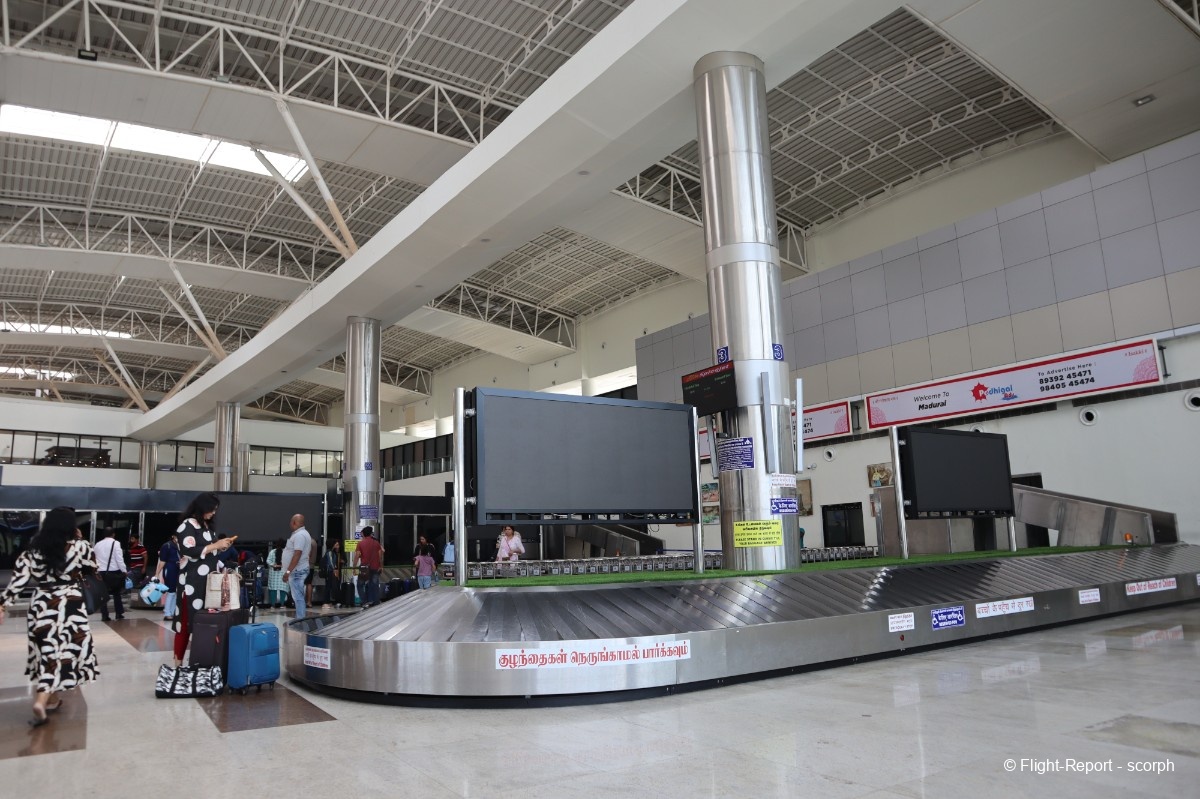
A few meters further, we arrive on the ground side, with this vast hall that combines both departures and arrivals… It’s clear that Madurai has gone big with this new facilities!

About twenty meters further, we step outside and are hit with a second thermal shock. Now, it's typical Indian organization… a bit chaotic, but there’s always a kind soul, more or less interested, ready to guide you to the taxi stand. I didn't try Uber, which doesn’t really work in smaller Indian towns, but as is often the case at Indian airports, there’s a prepaid taxi counter.
From there, you’re assigned to one of the waiting drivers. The fares seemed fixed and not too expensive, considering the distance covered (I admit, I can't recall the exact price).
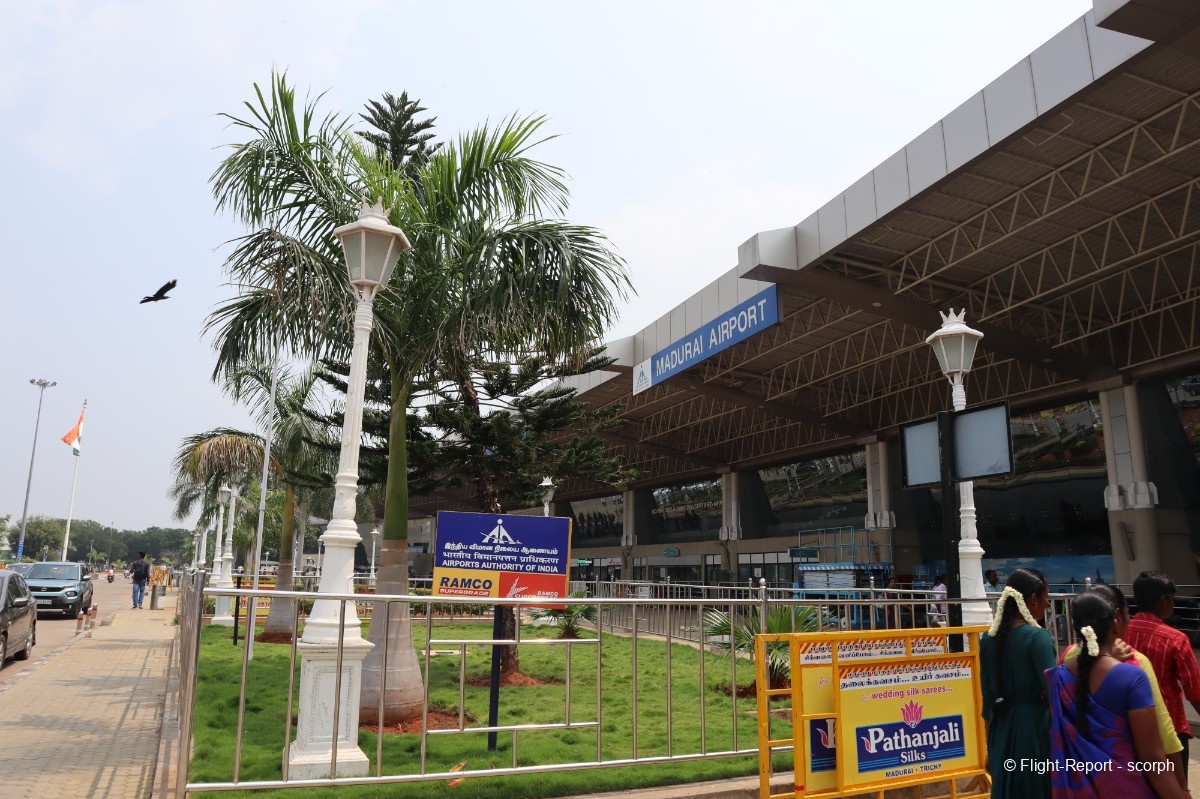
This is where this first account of domestic flights in India comes to an end, and there will be more to come!!!
